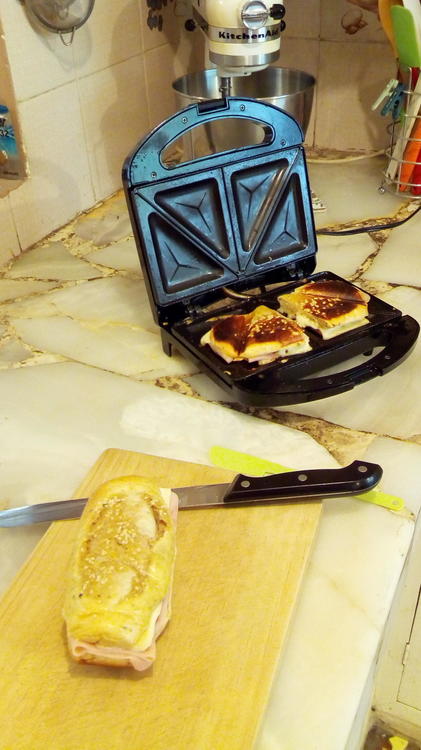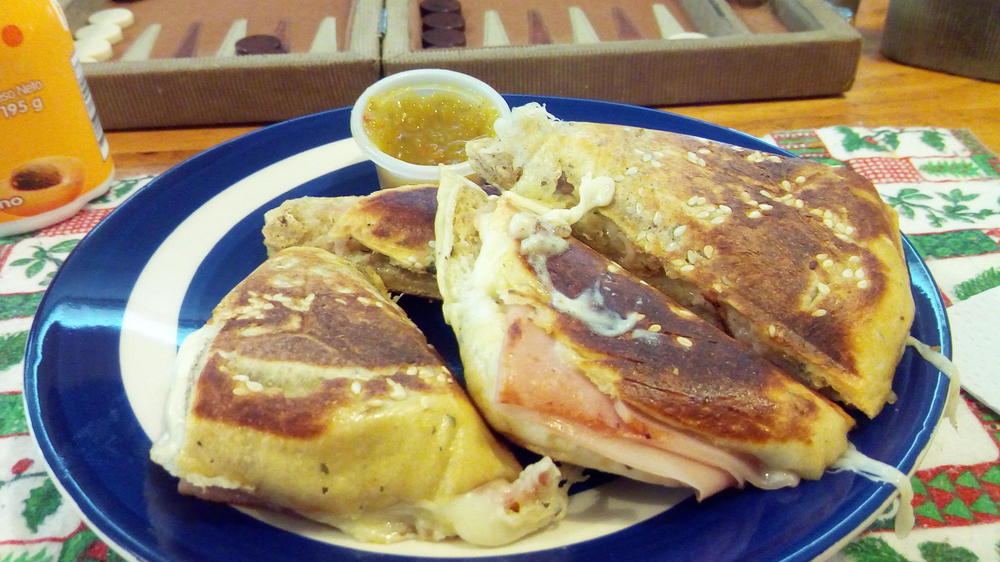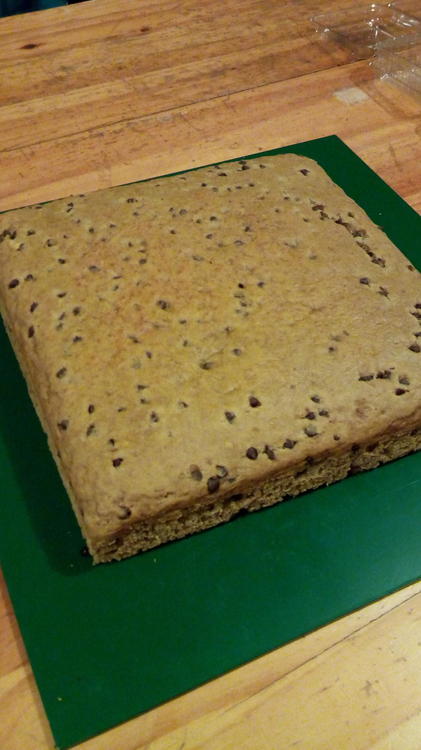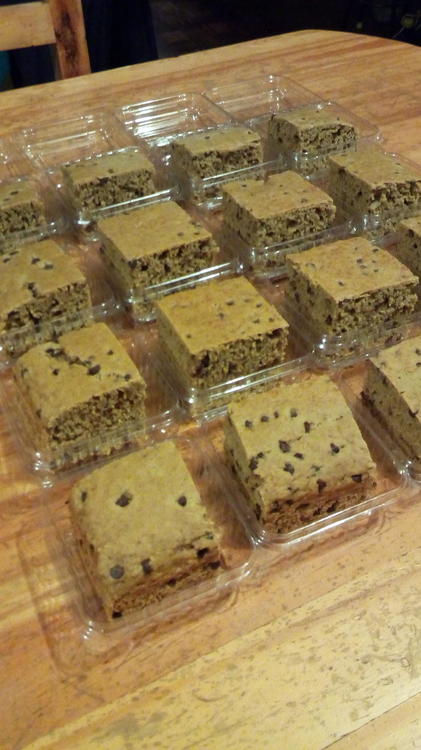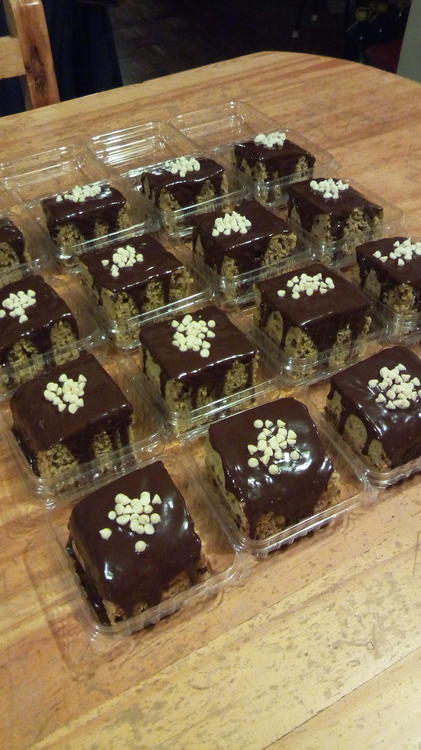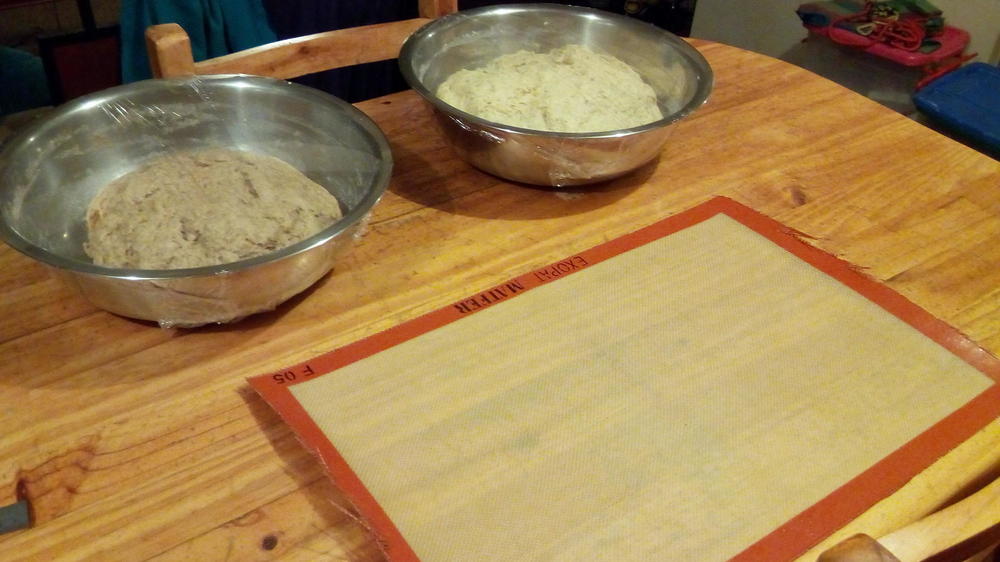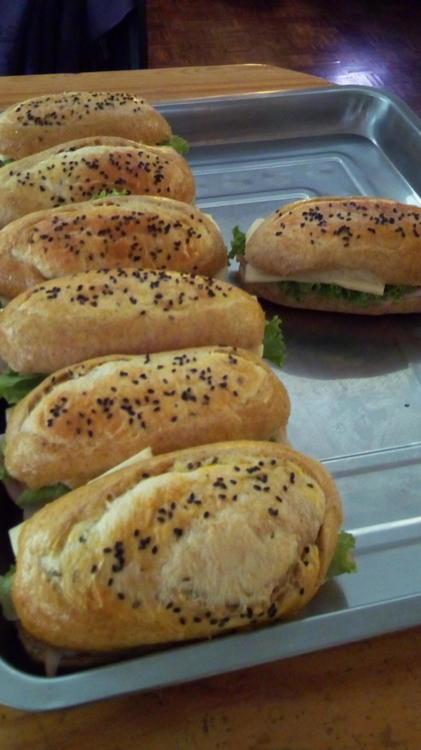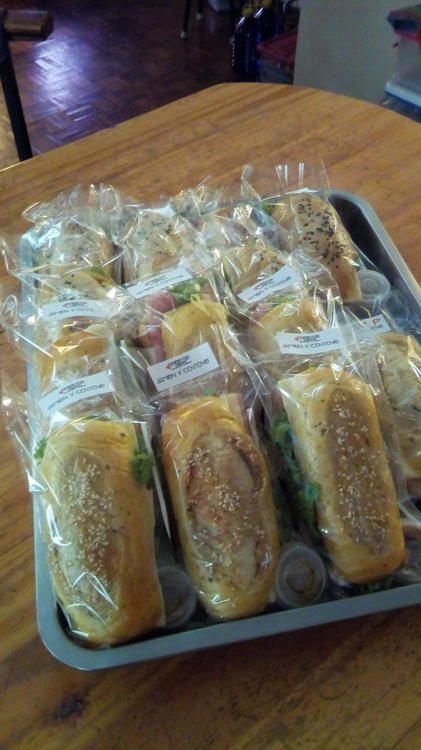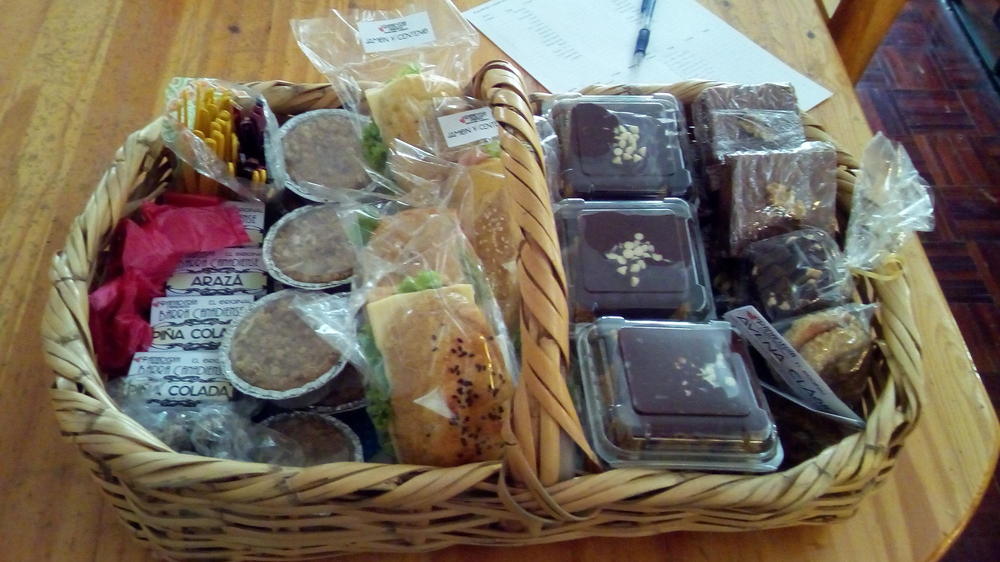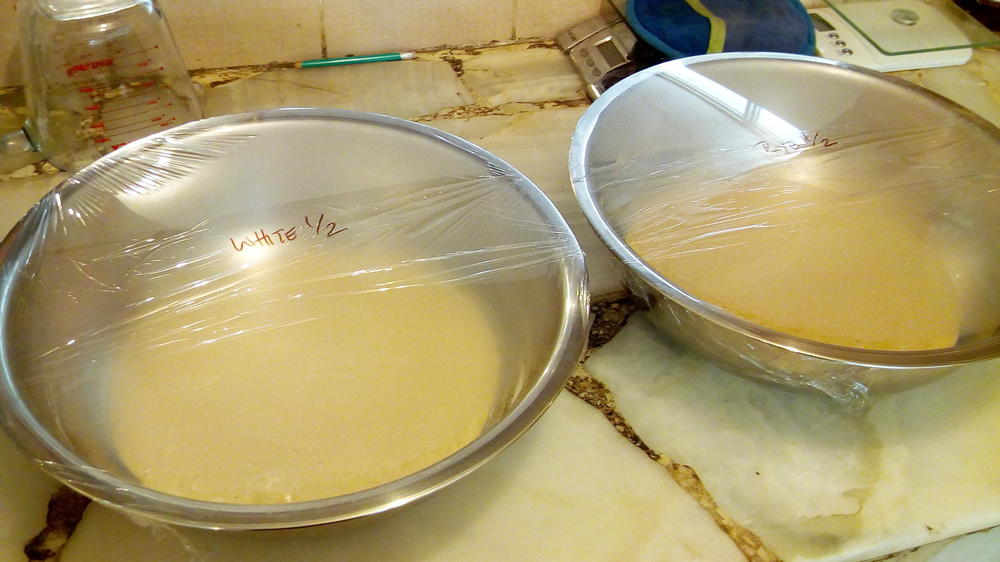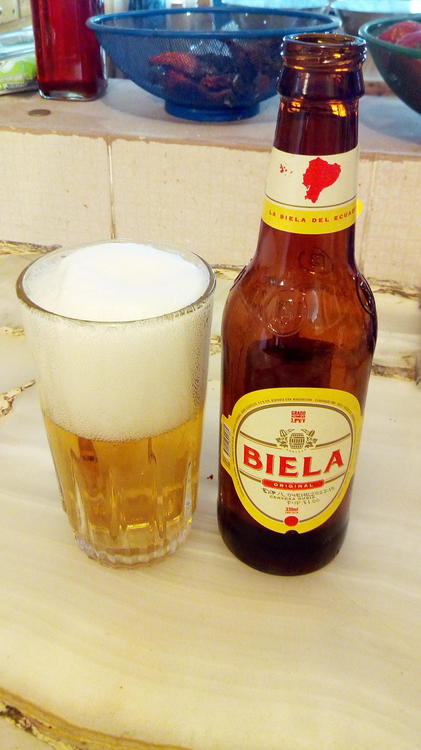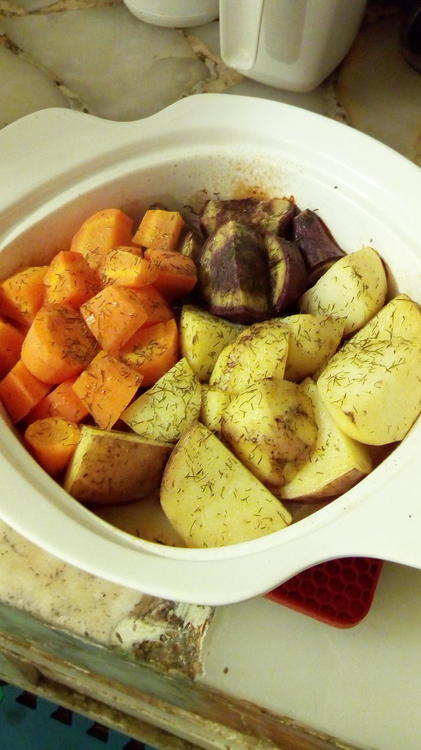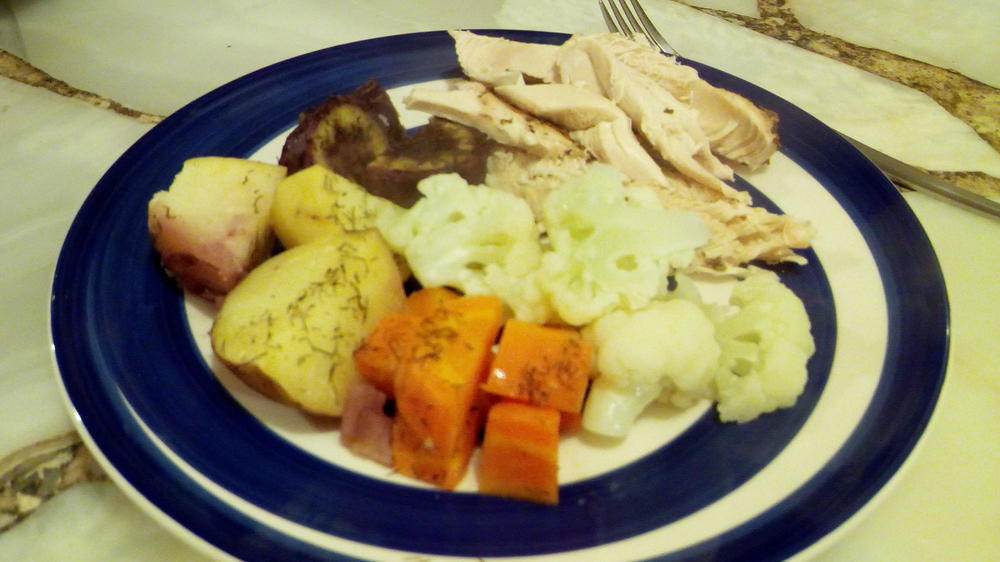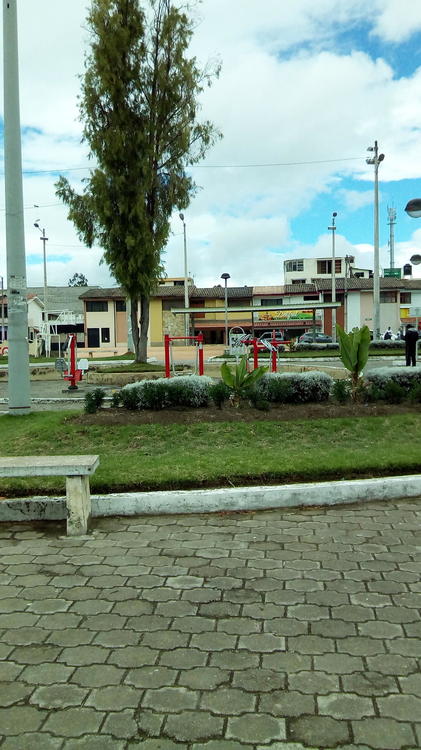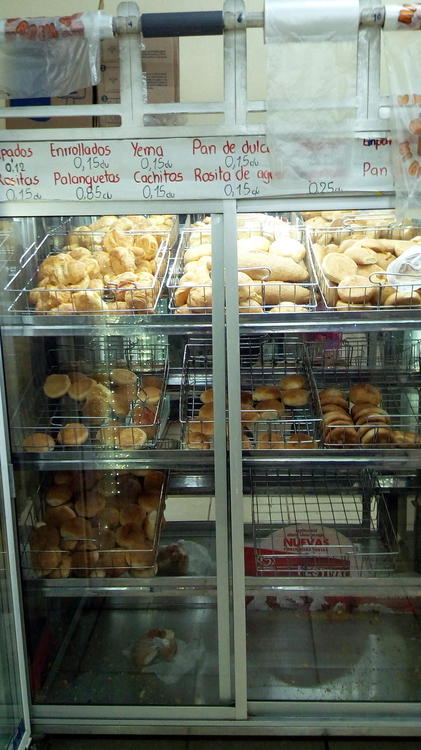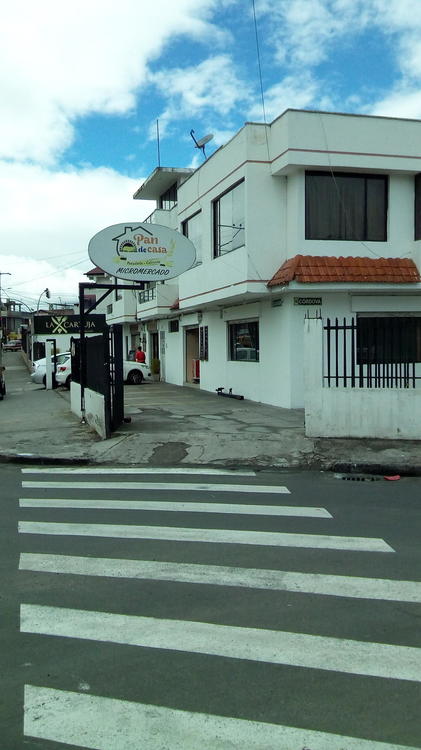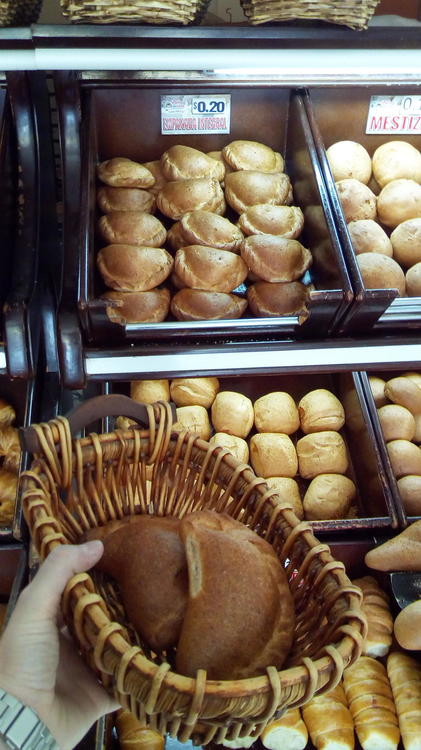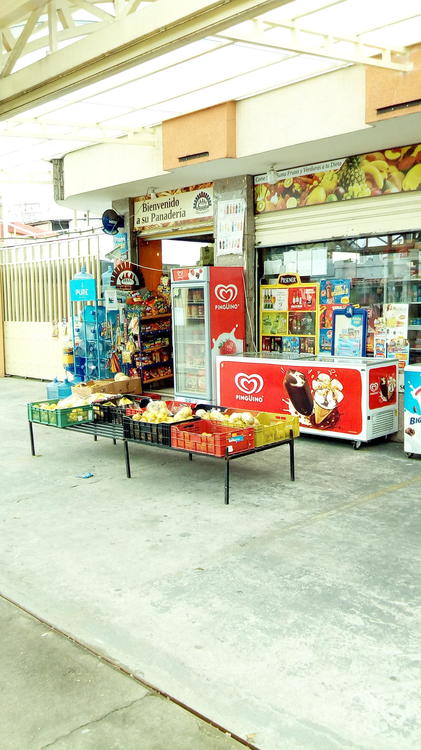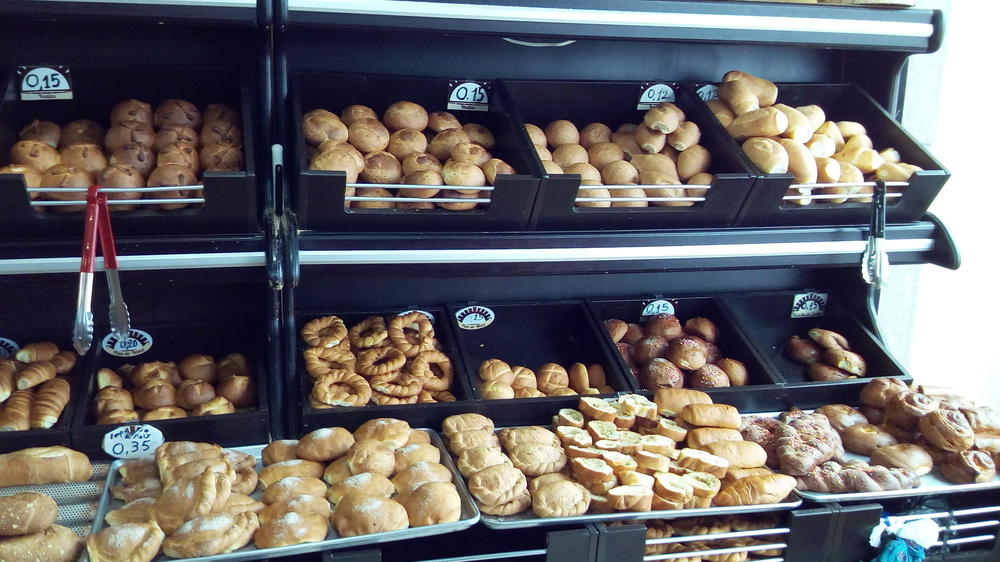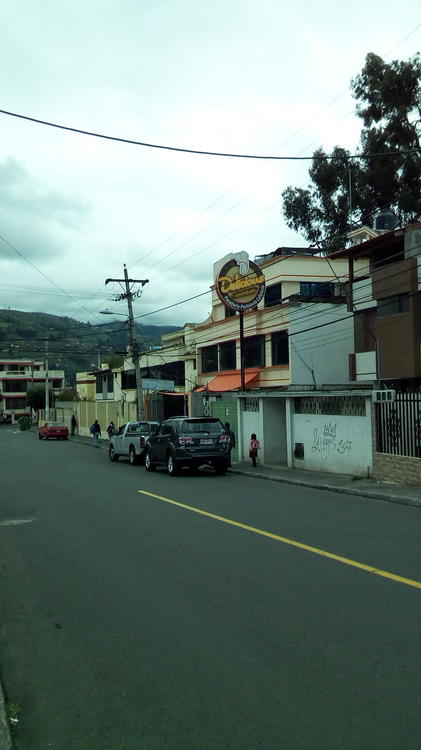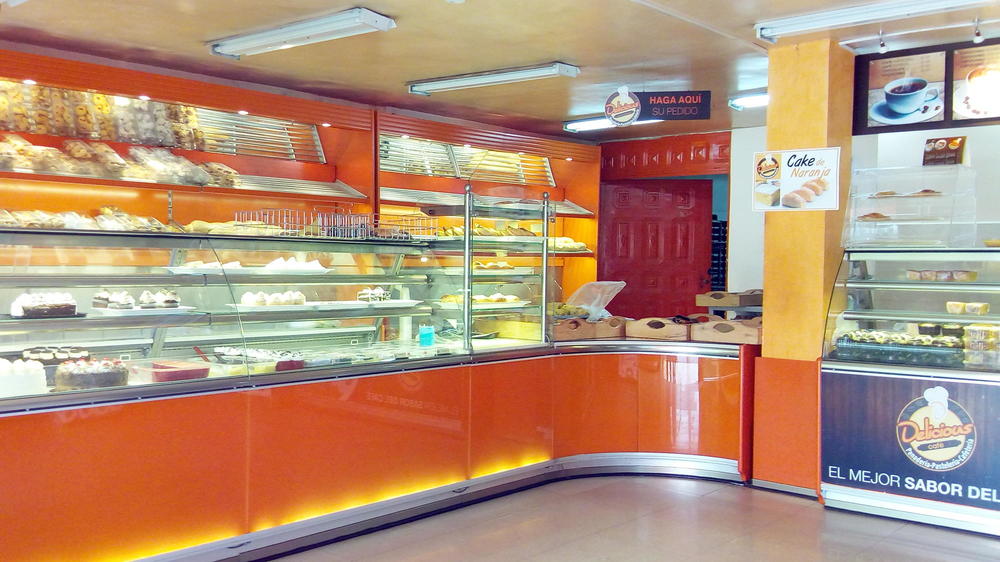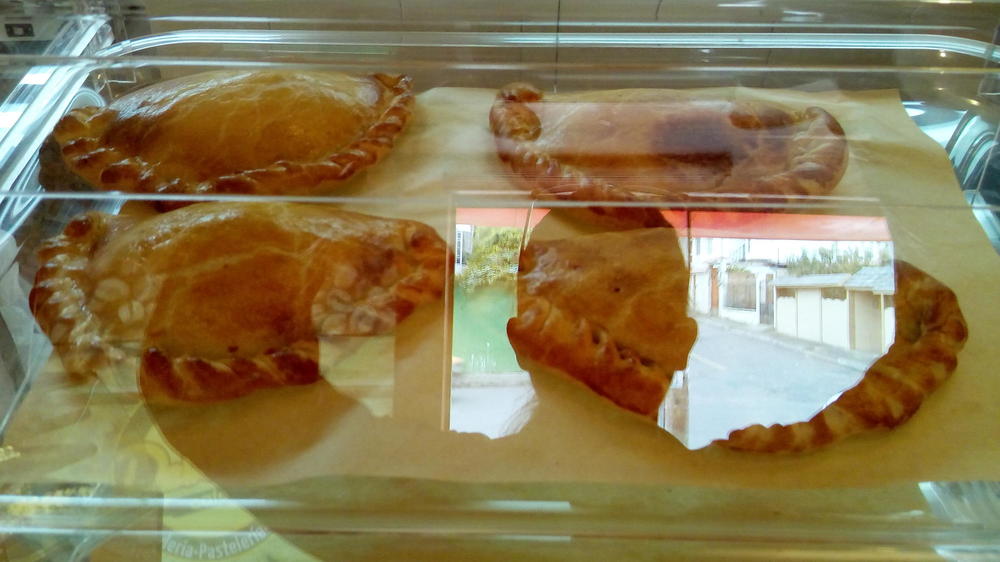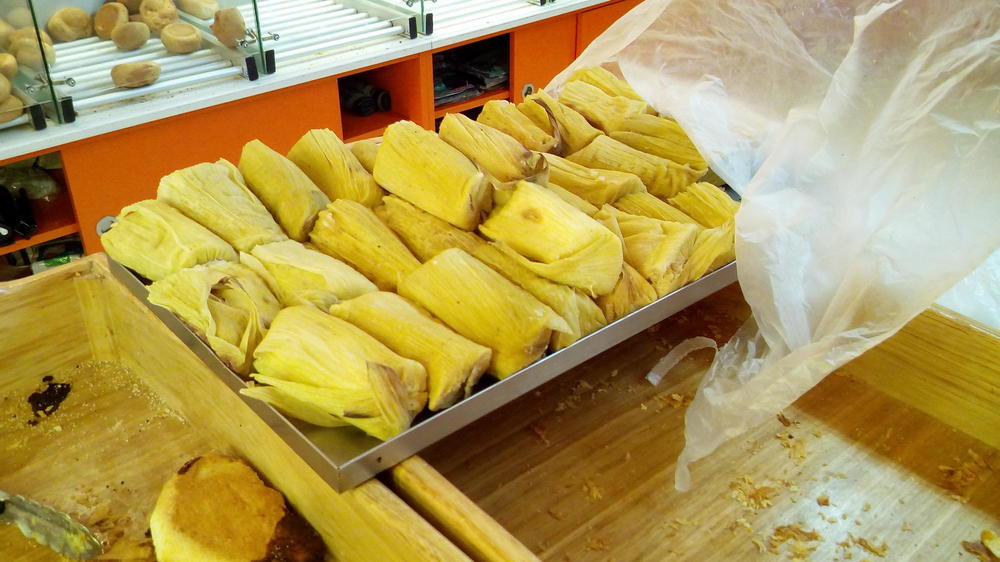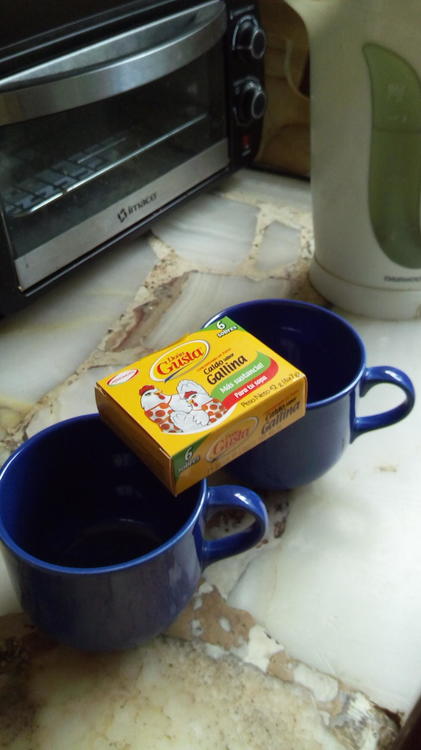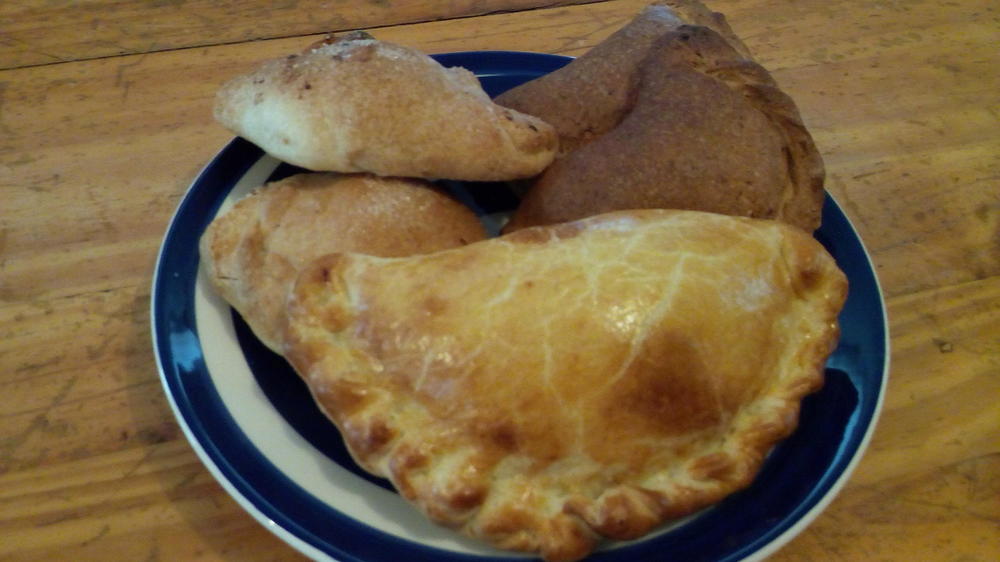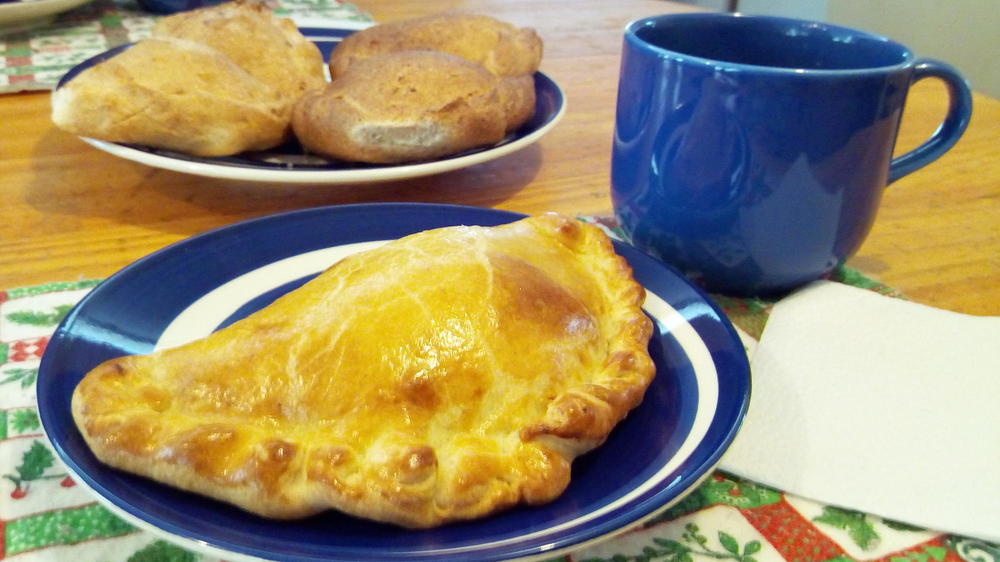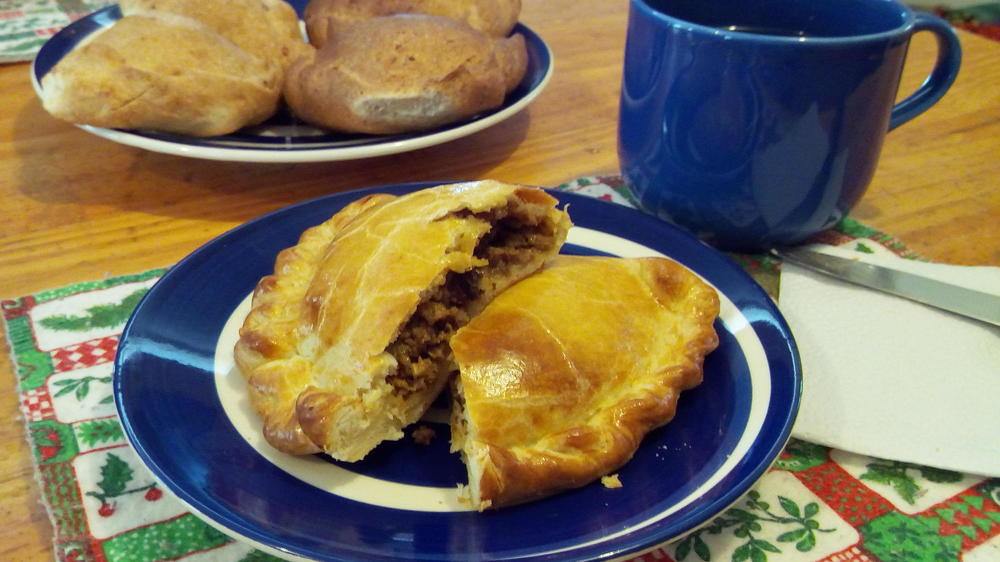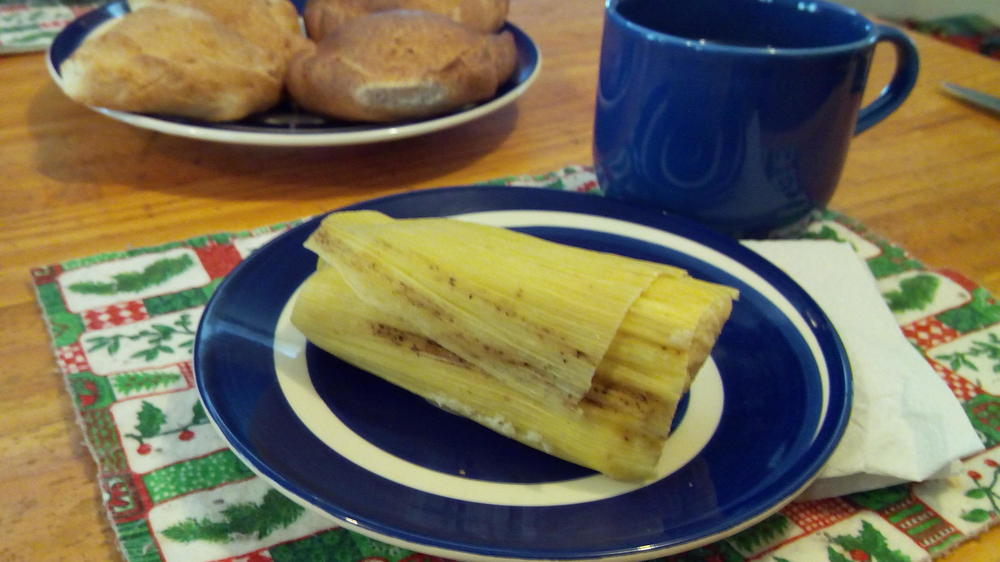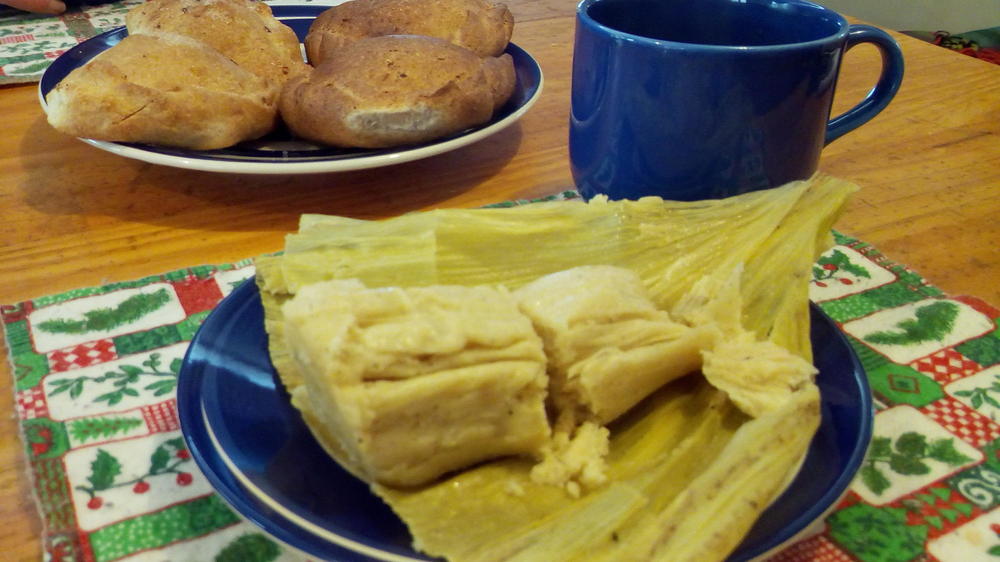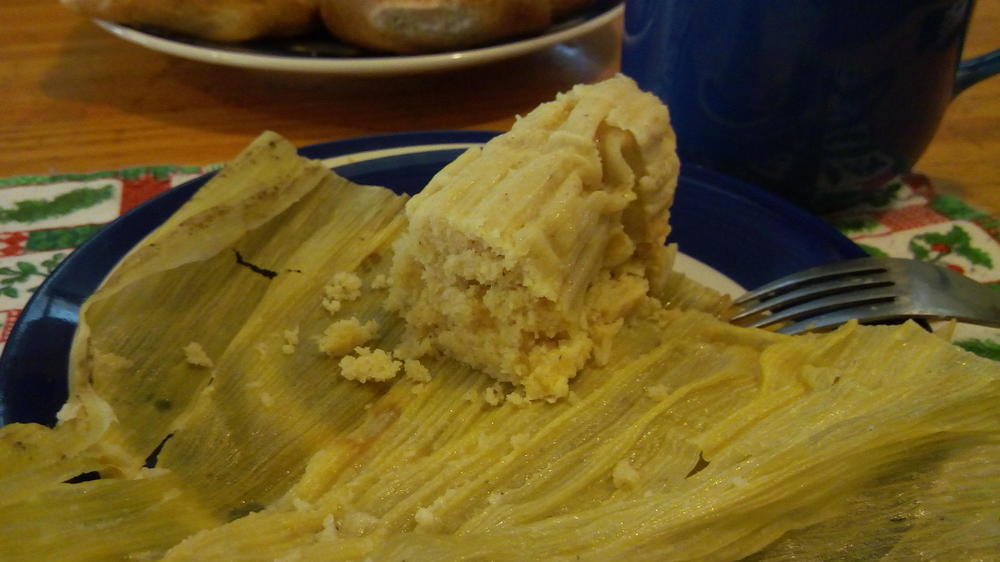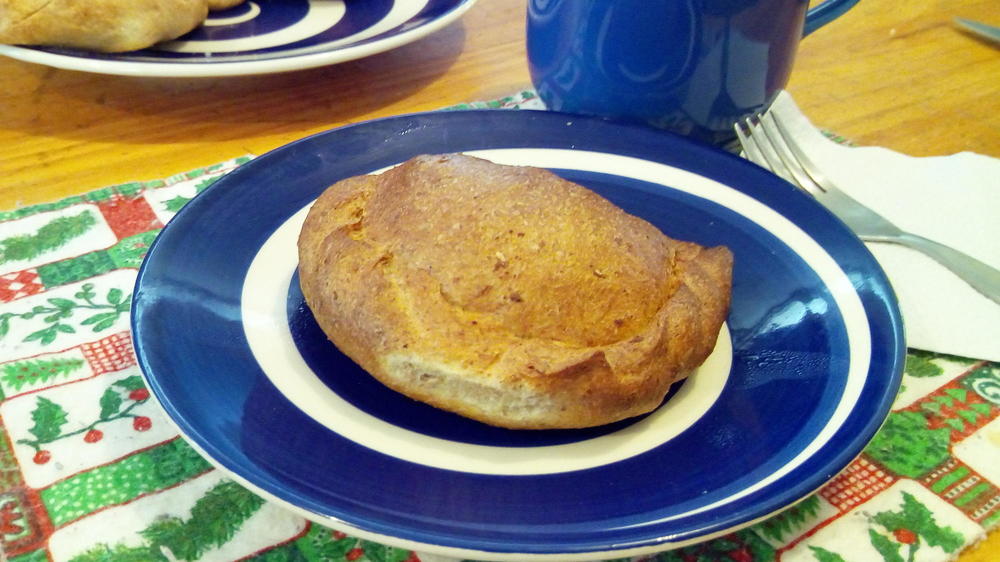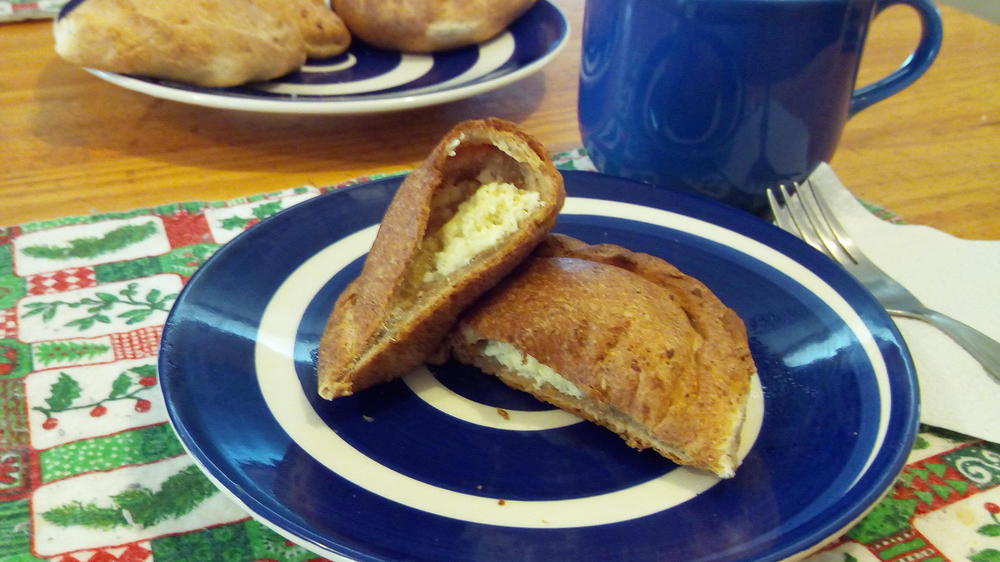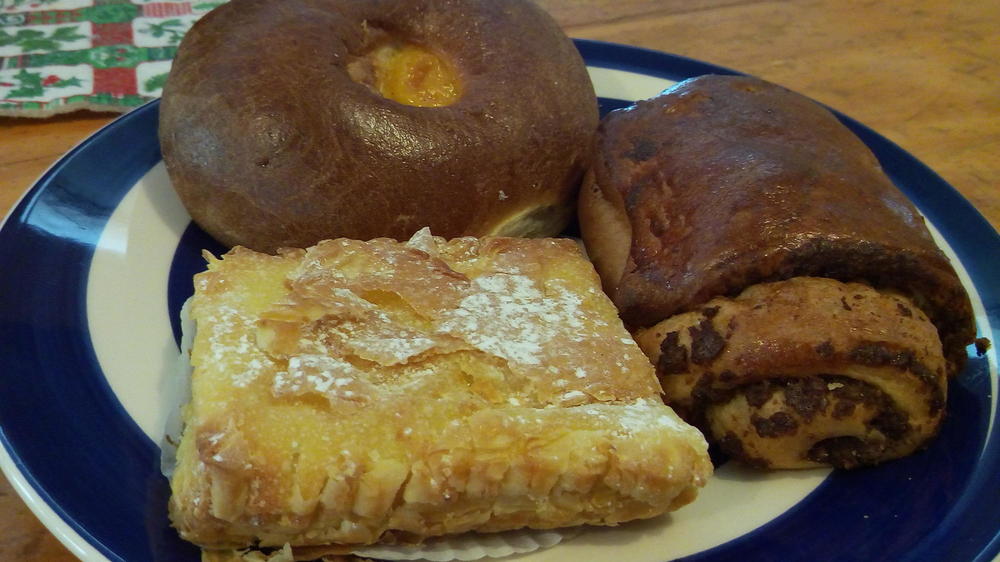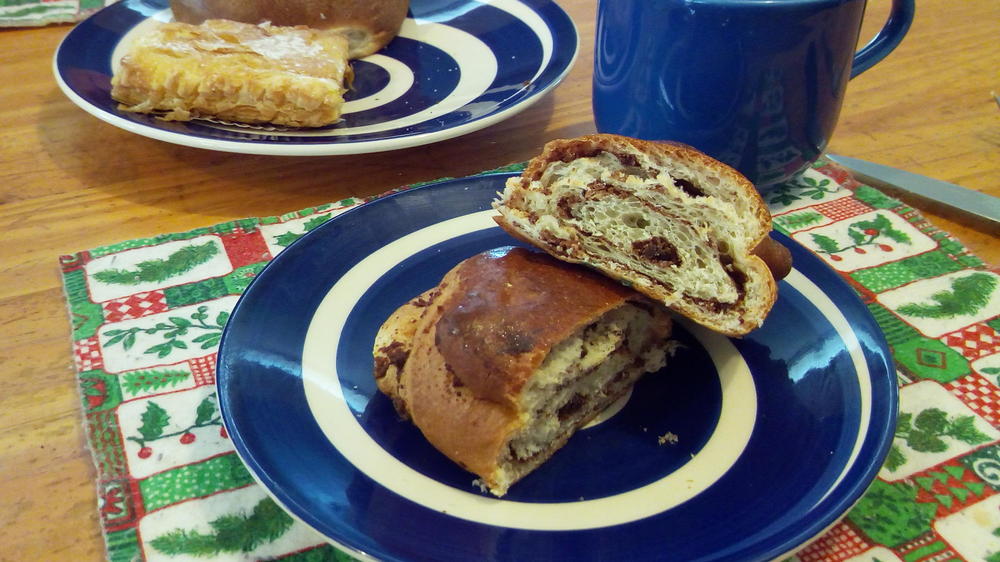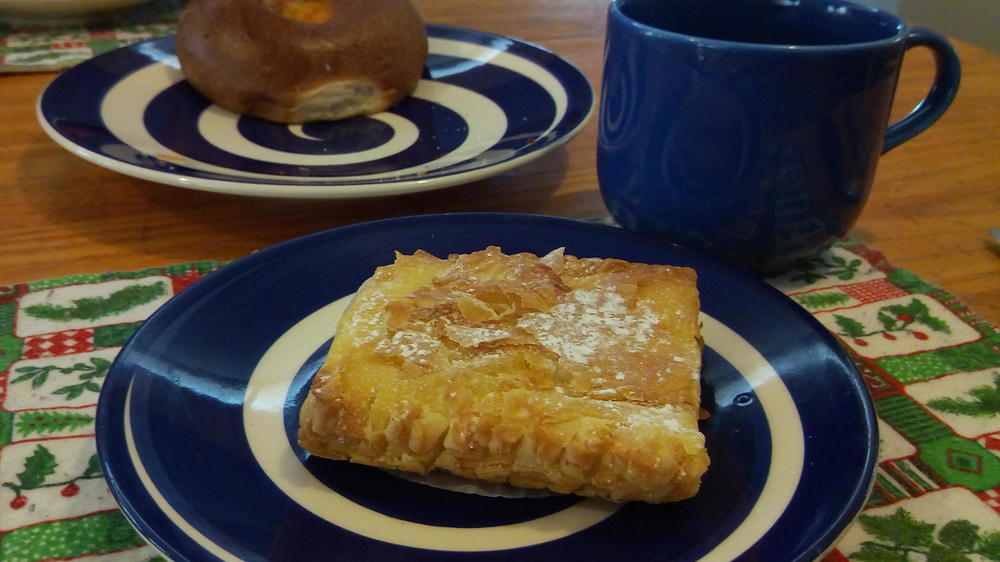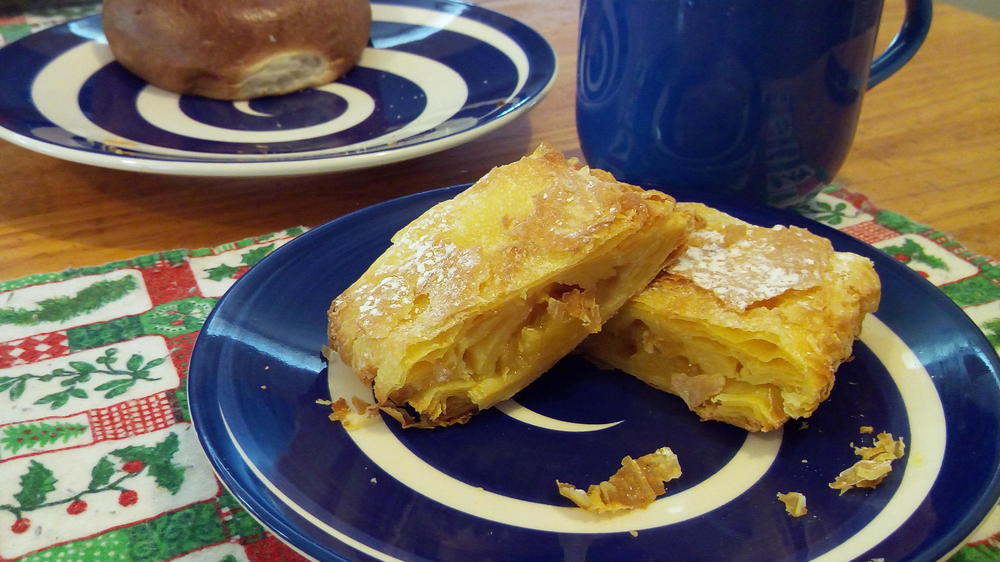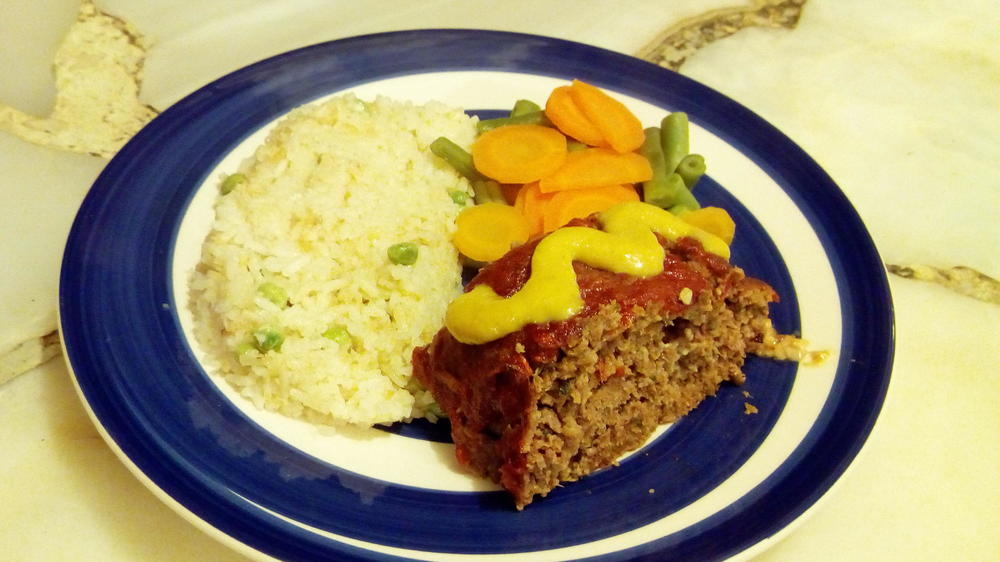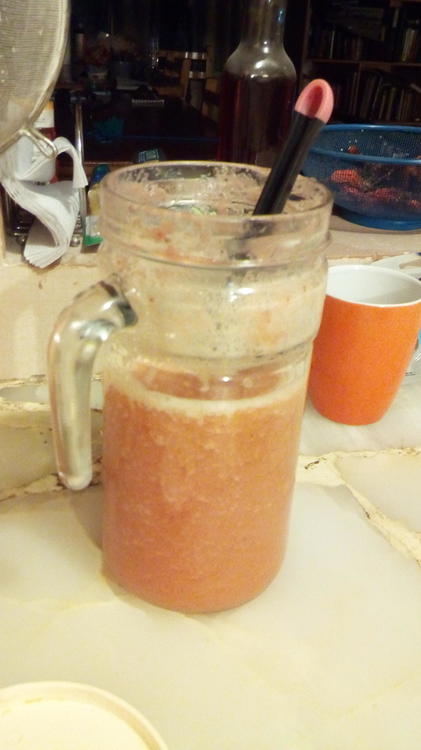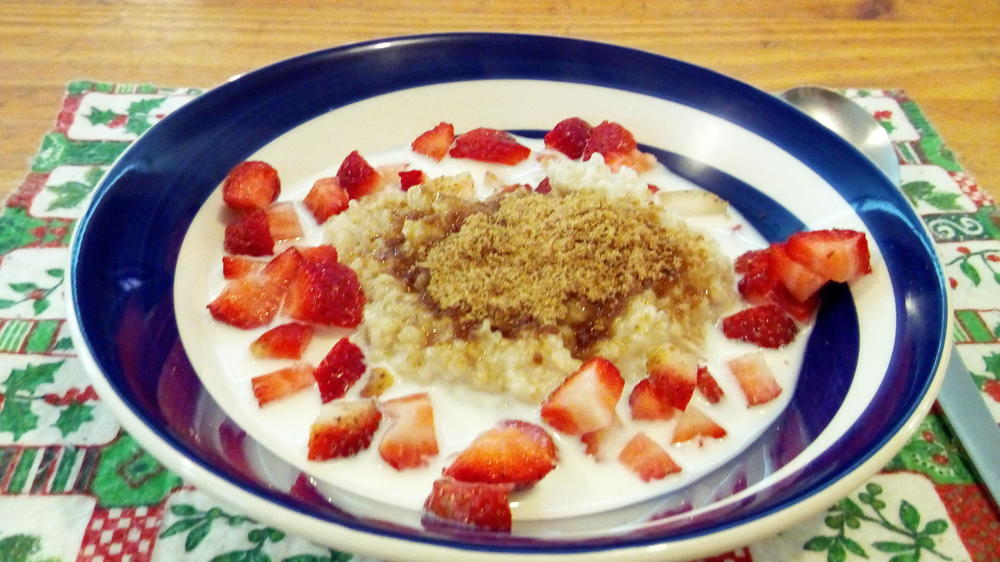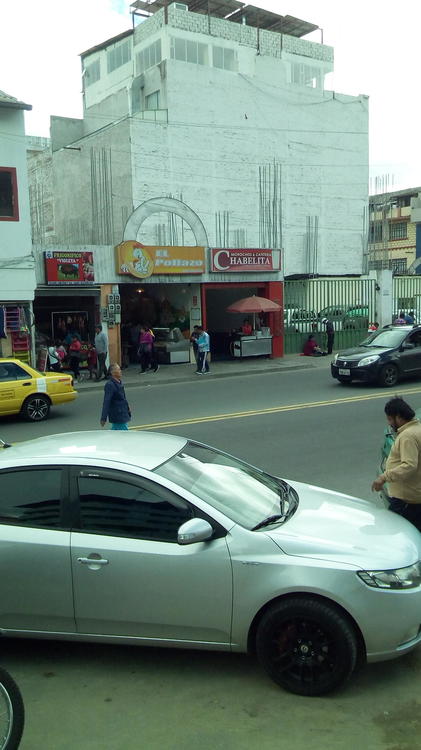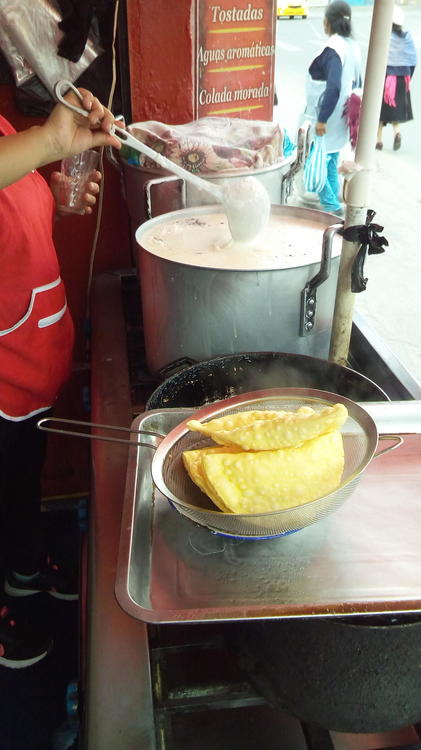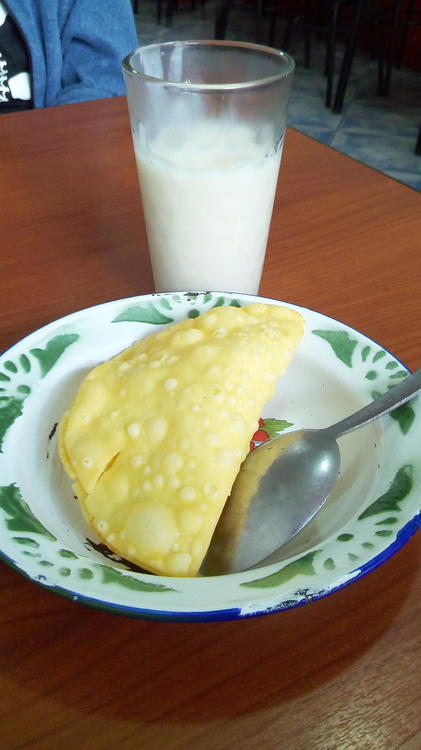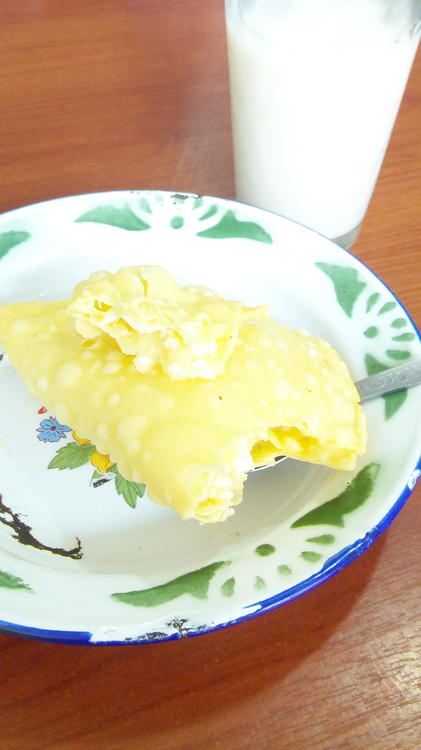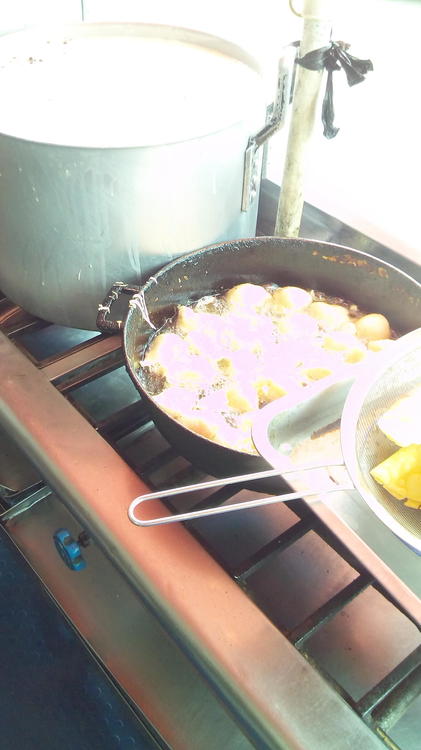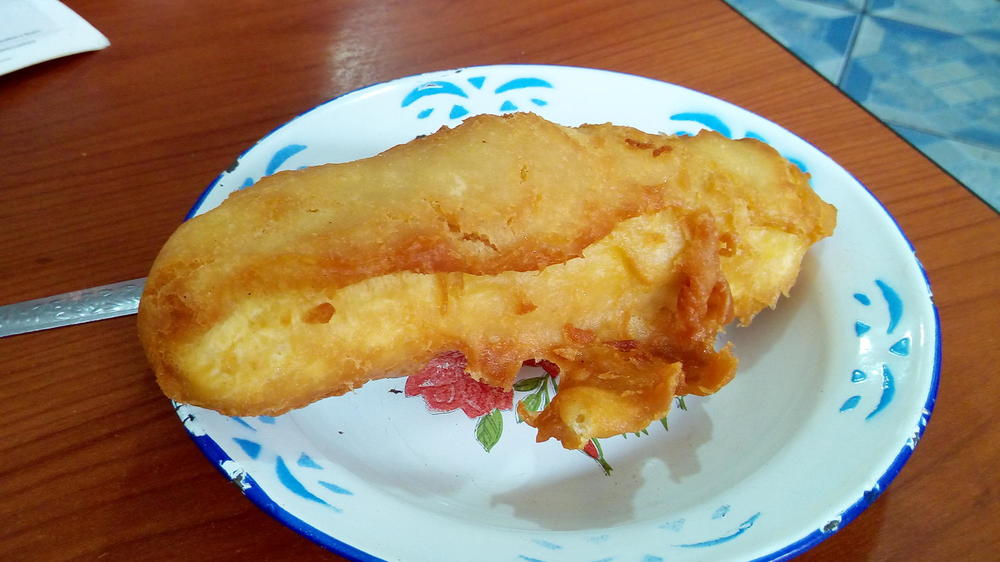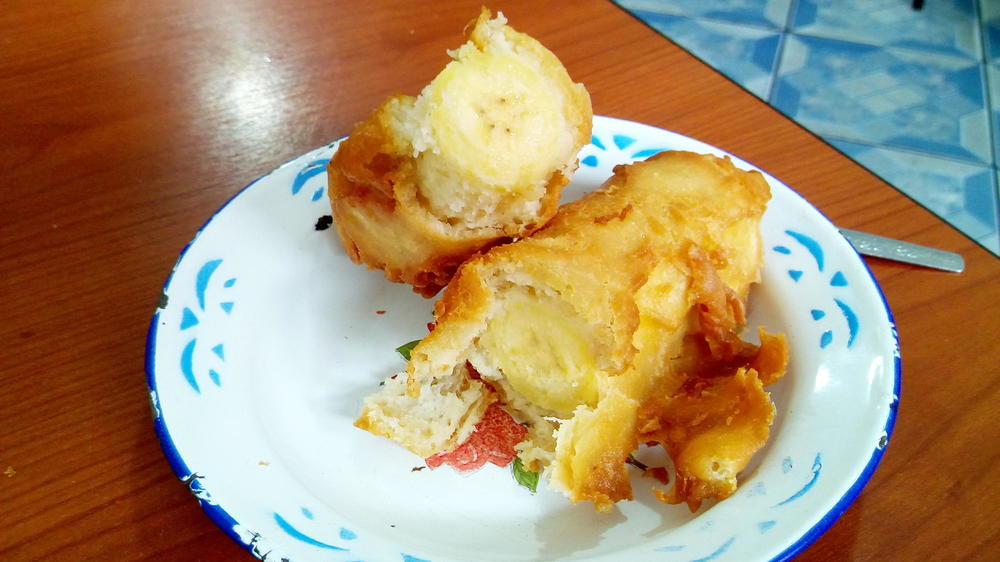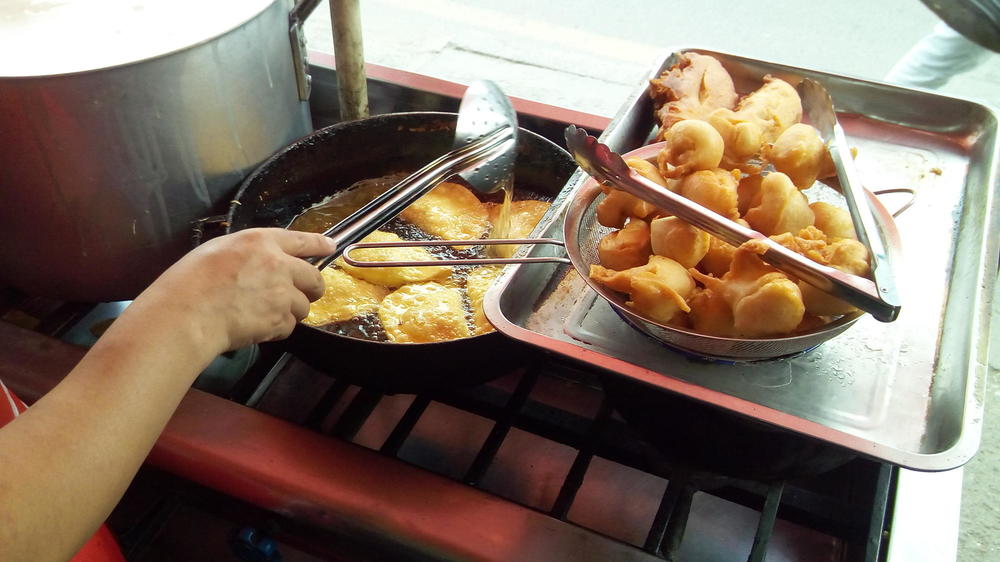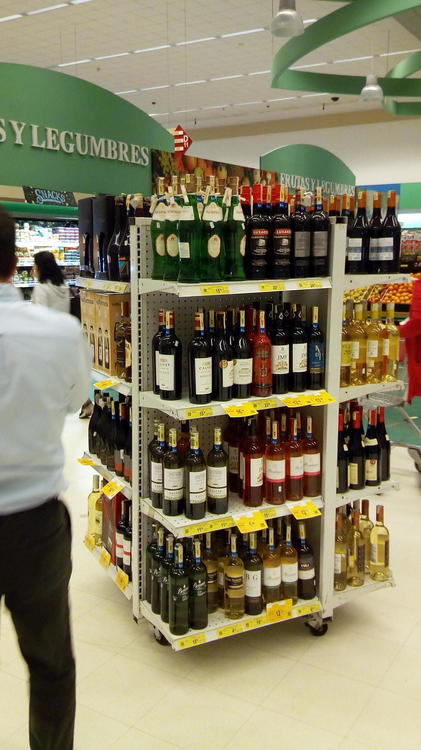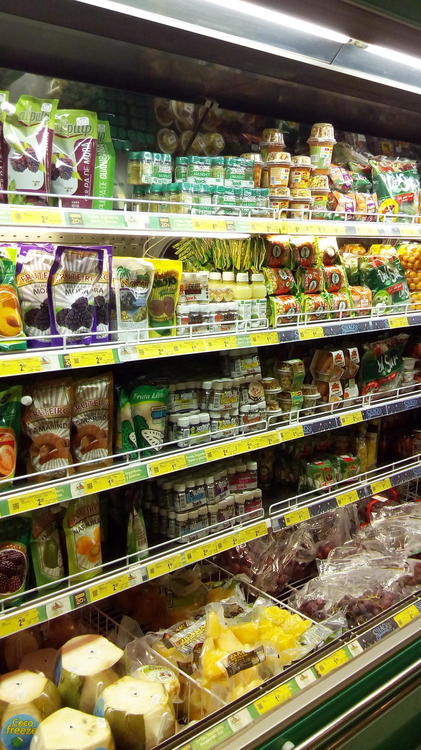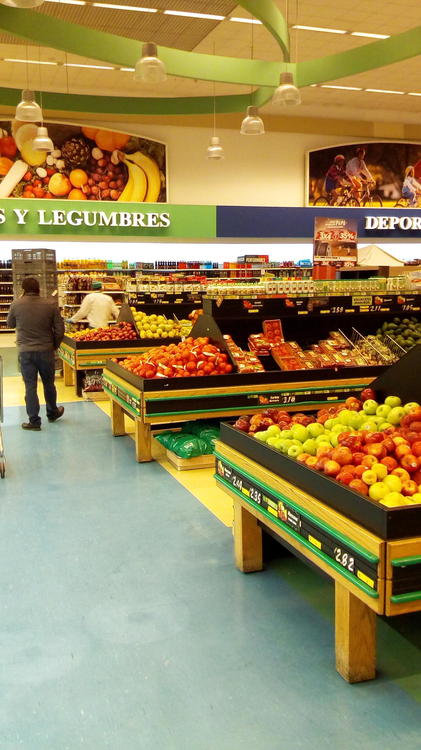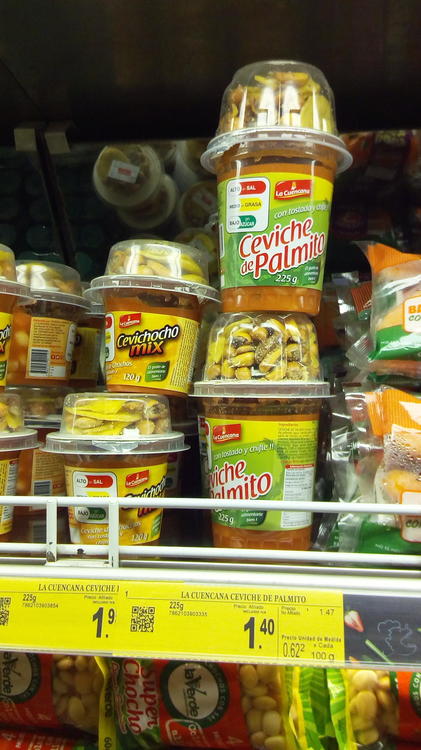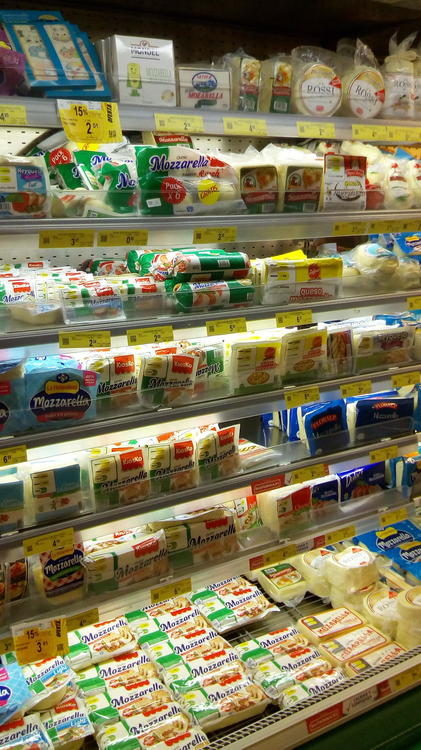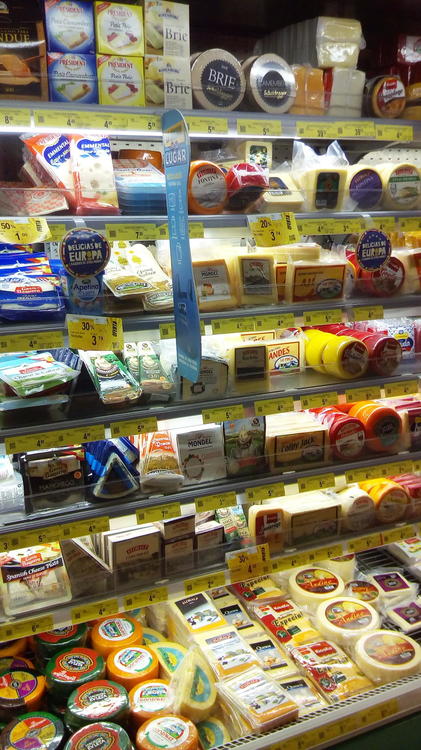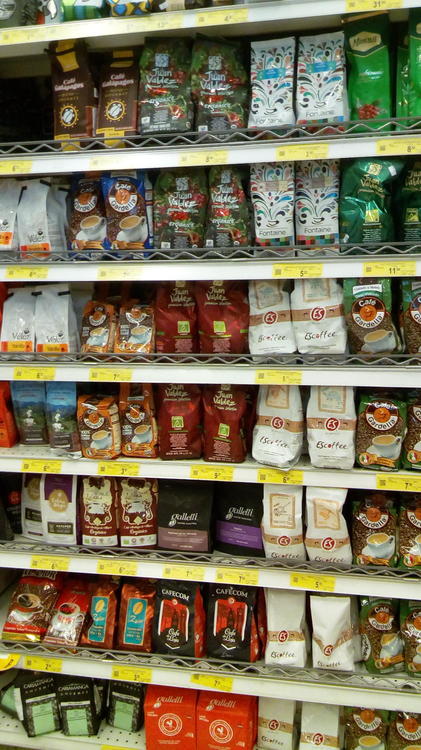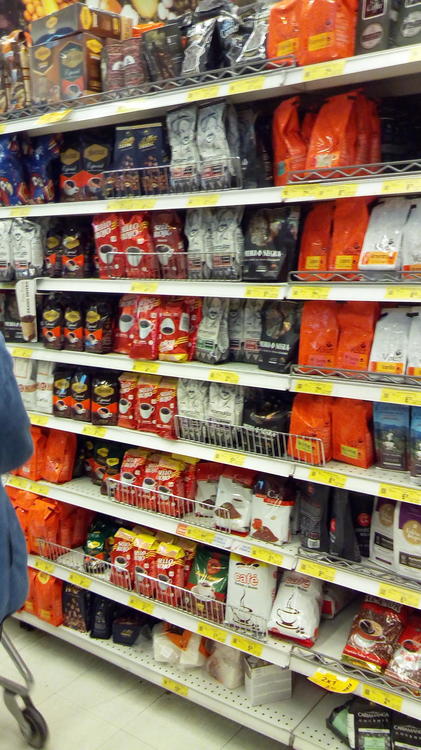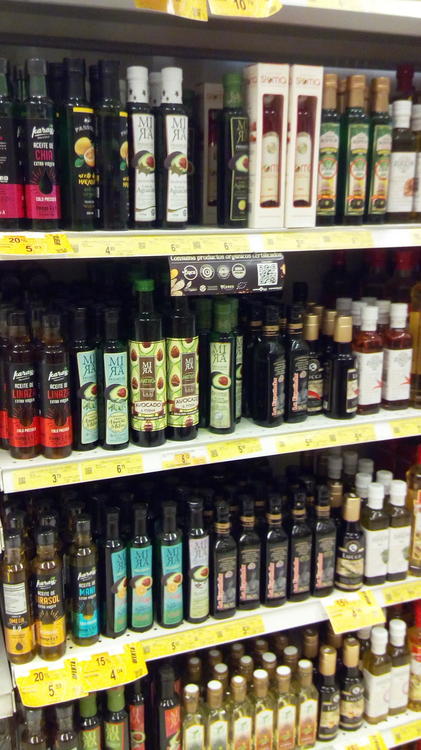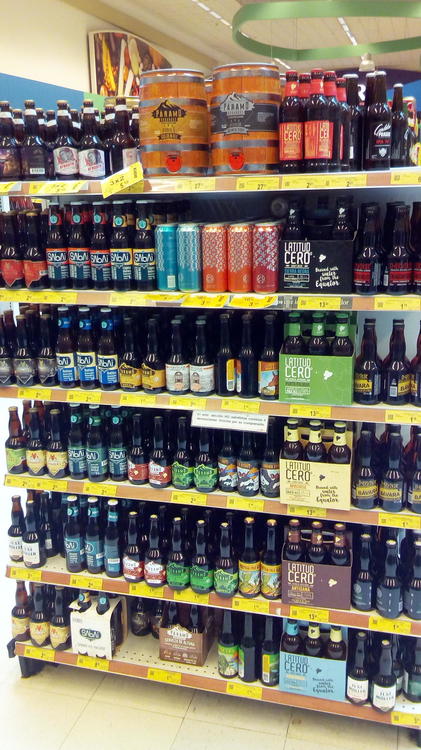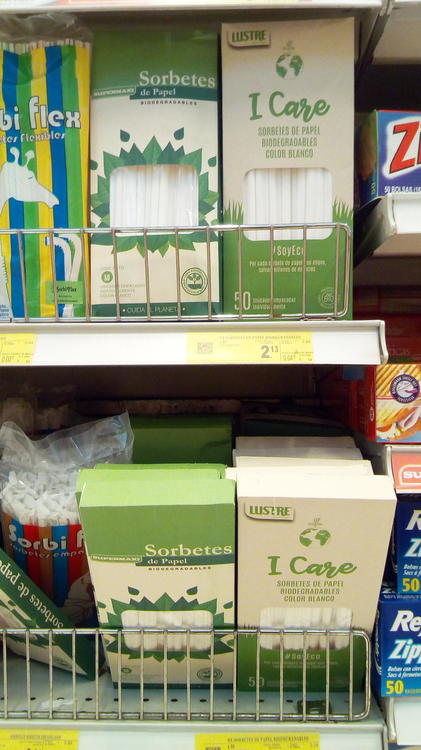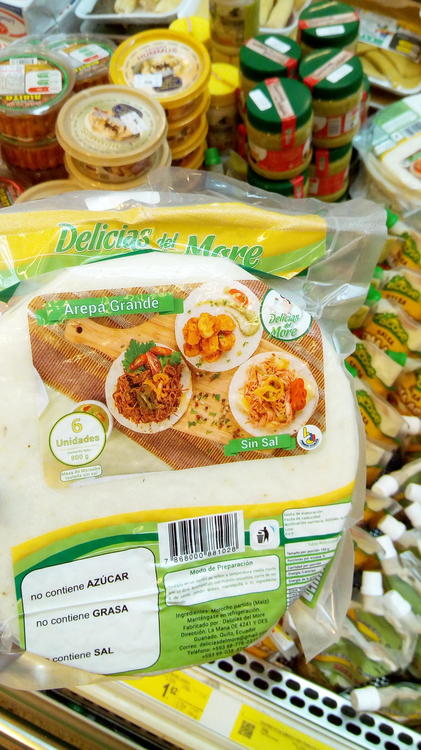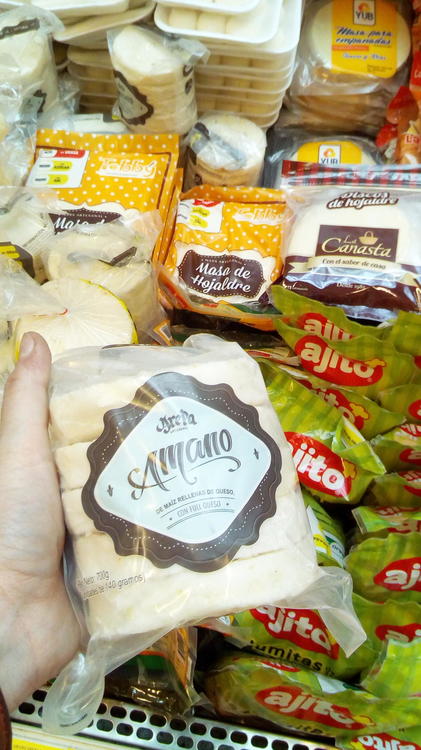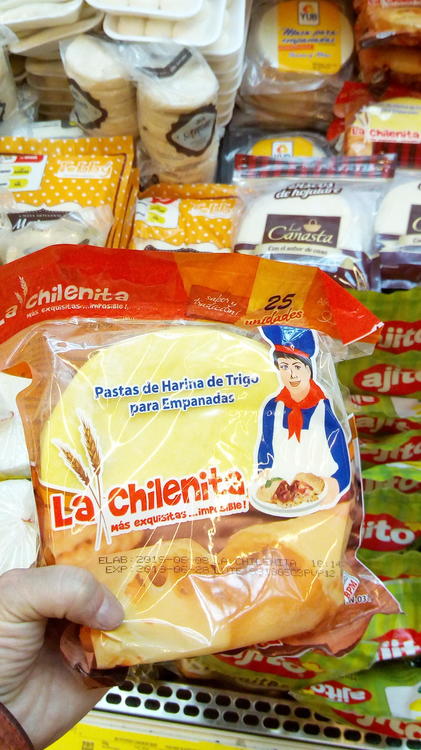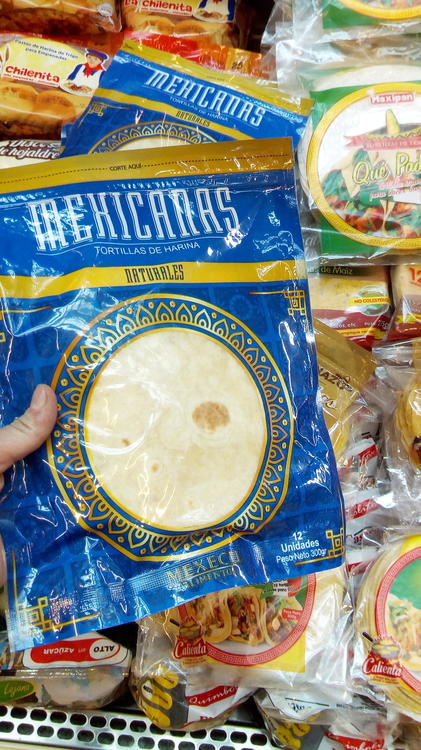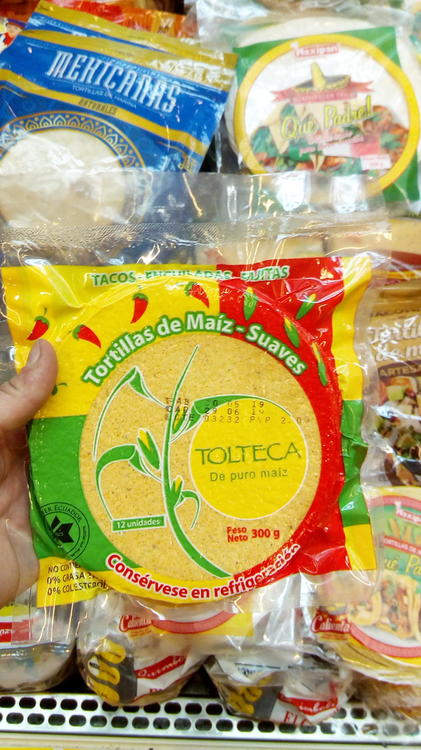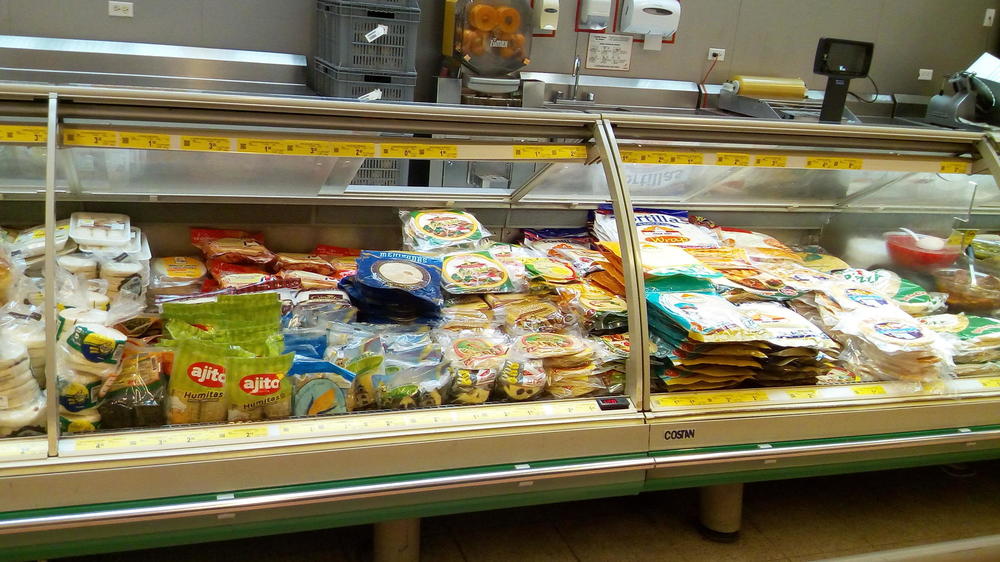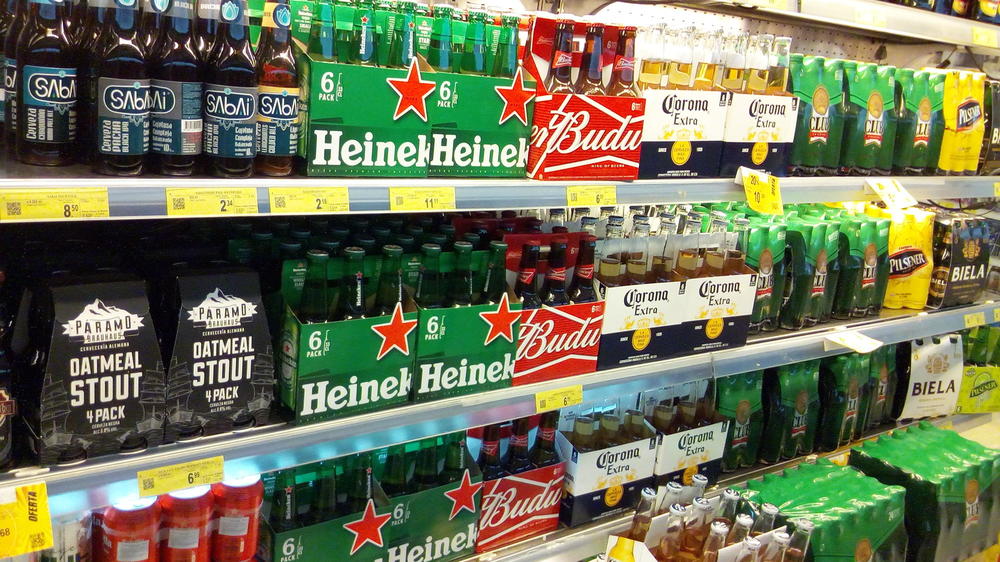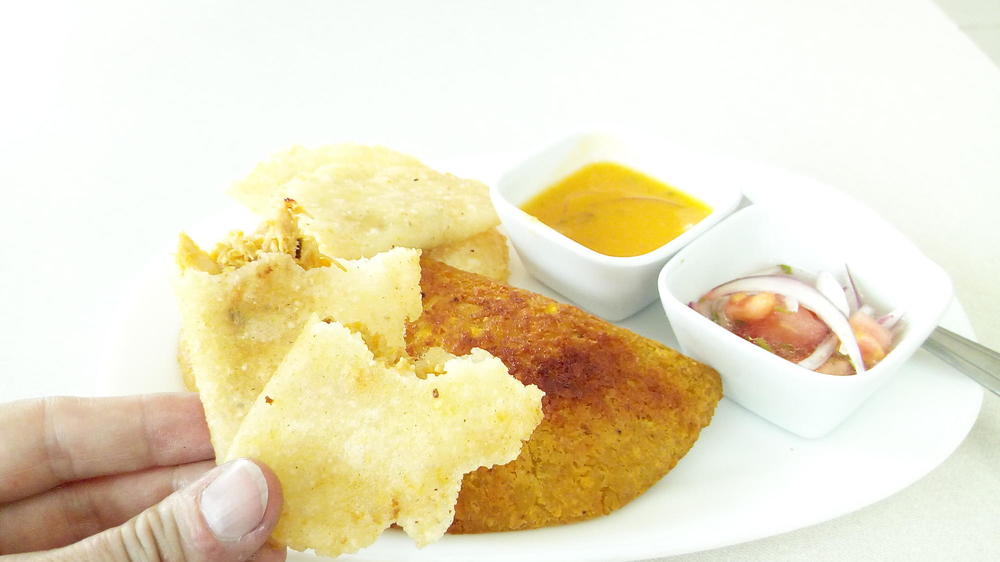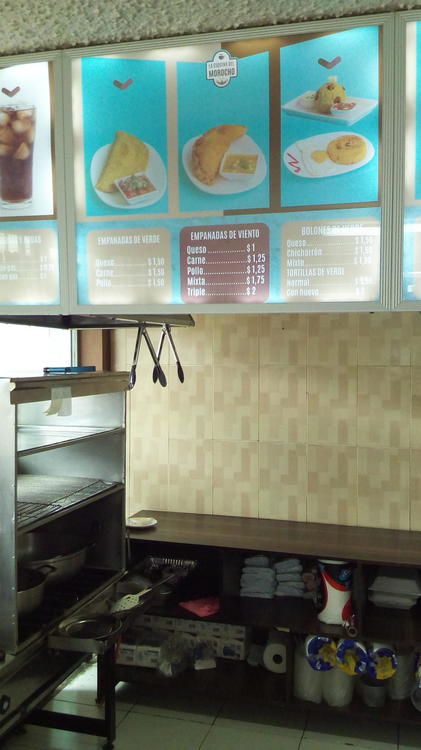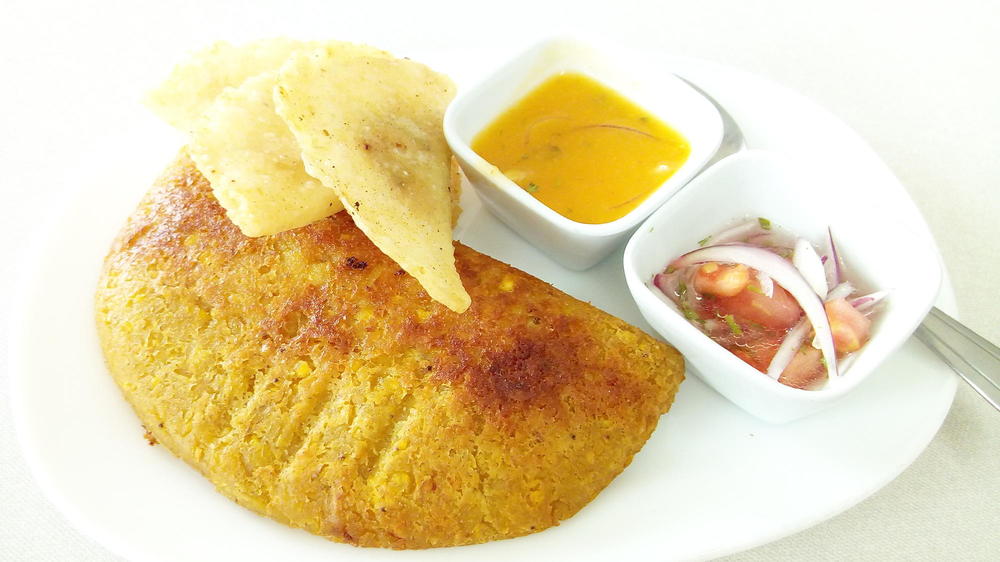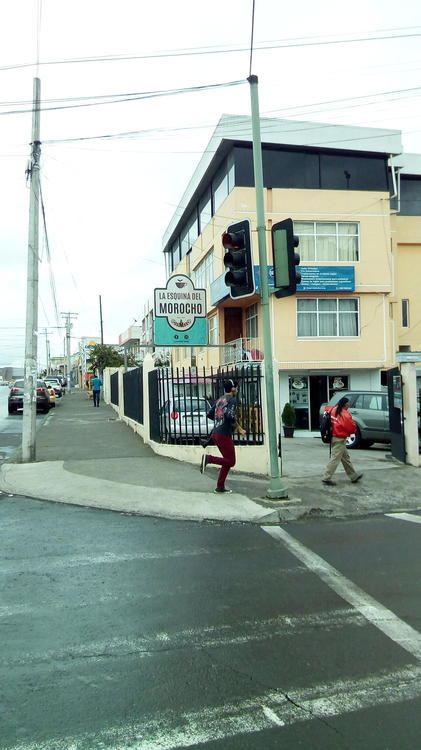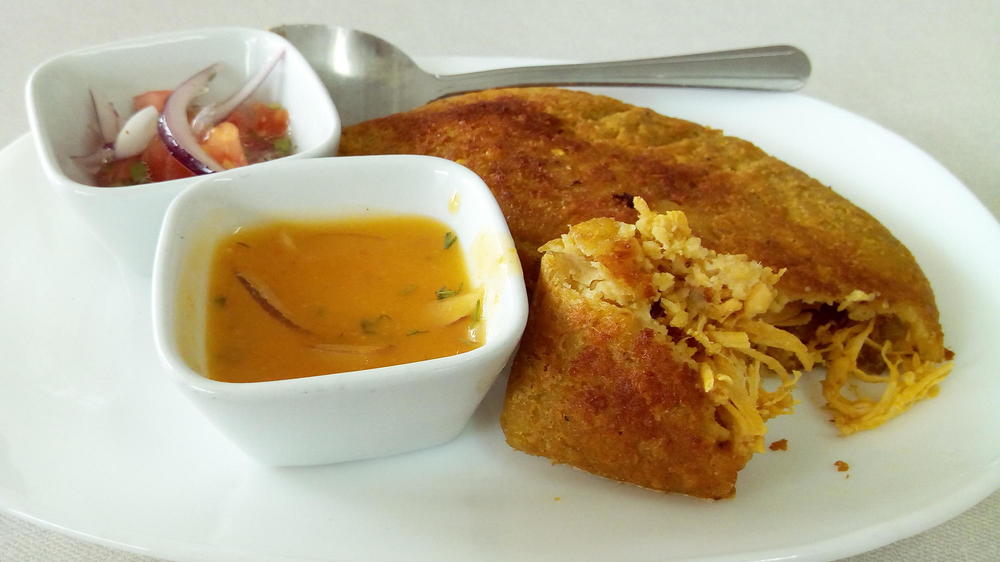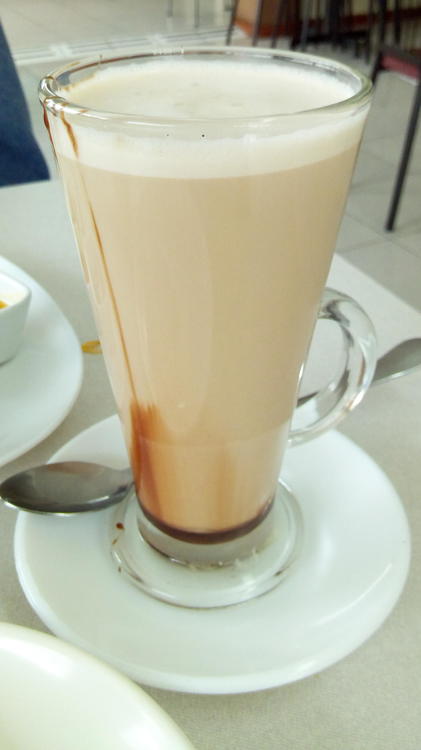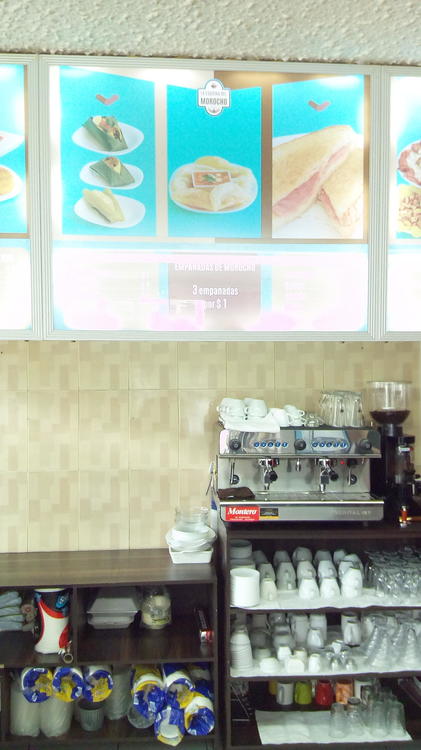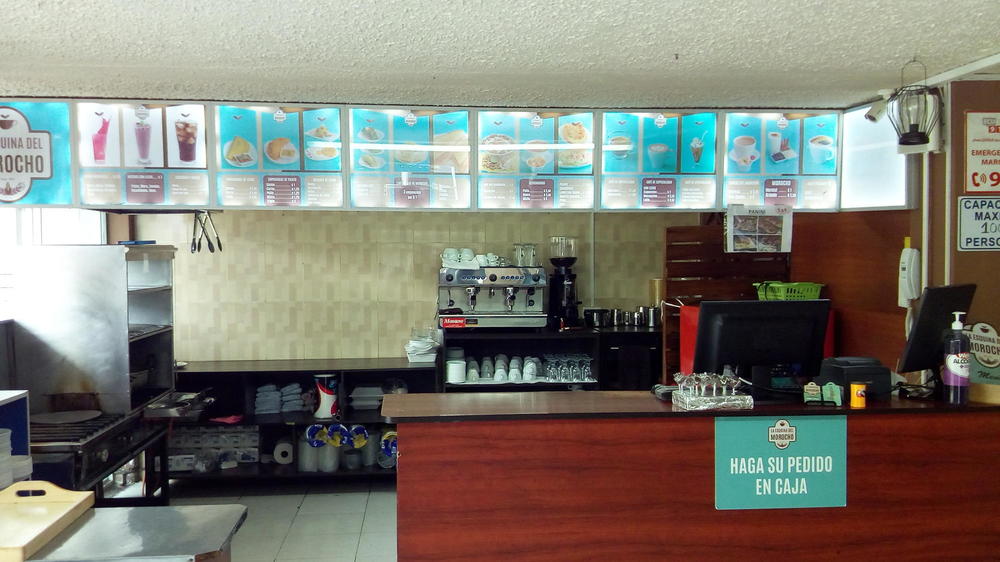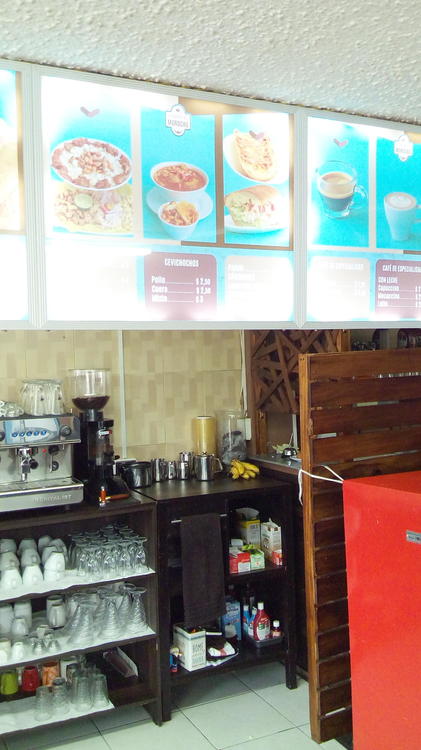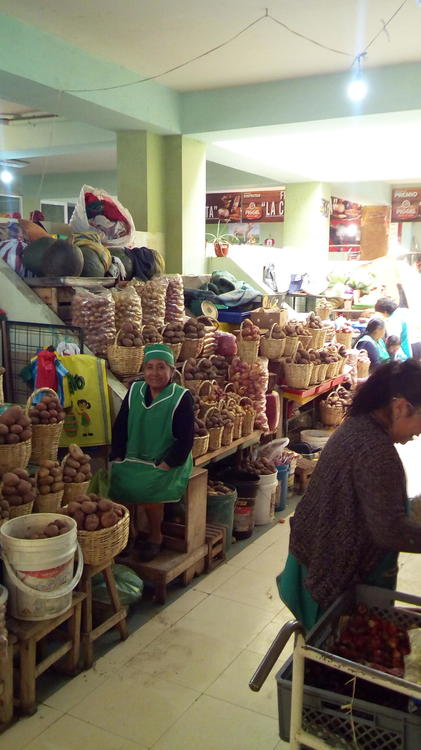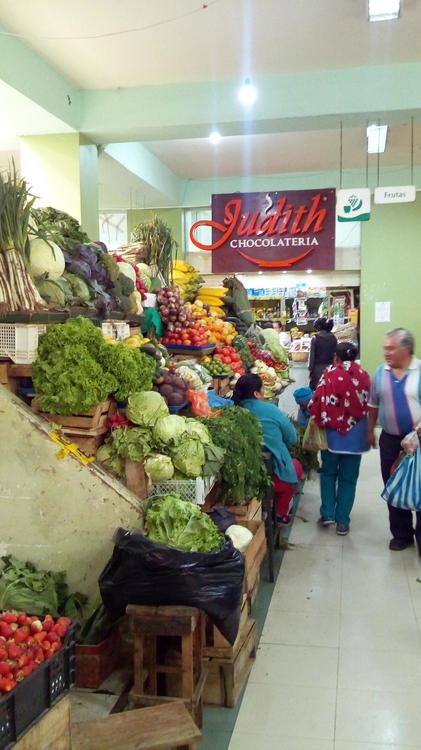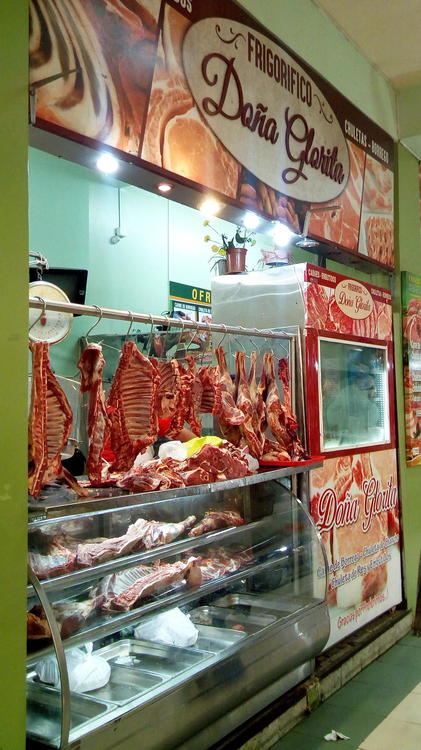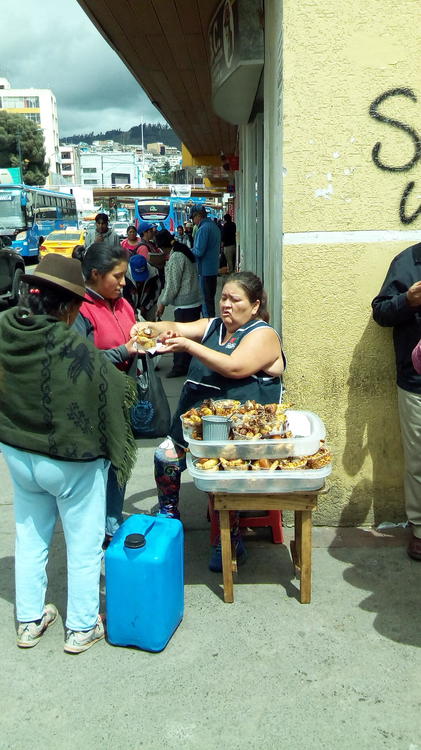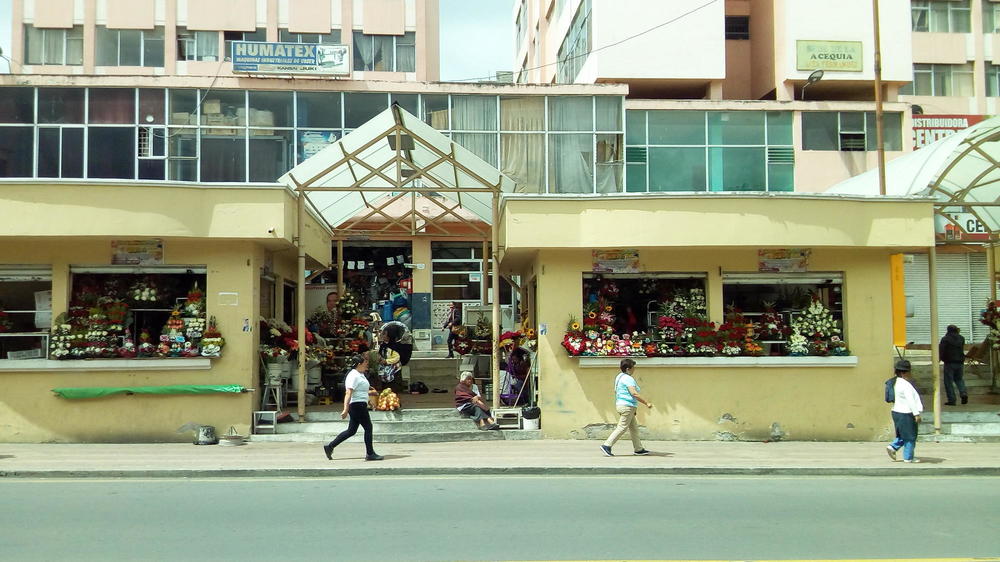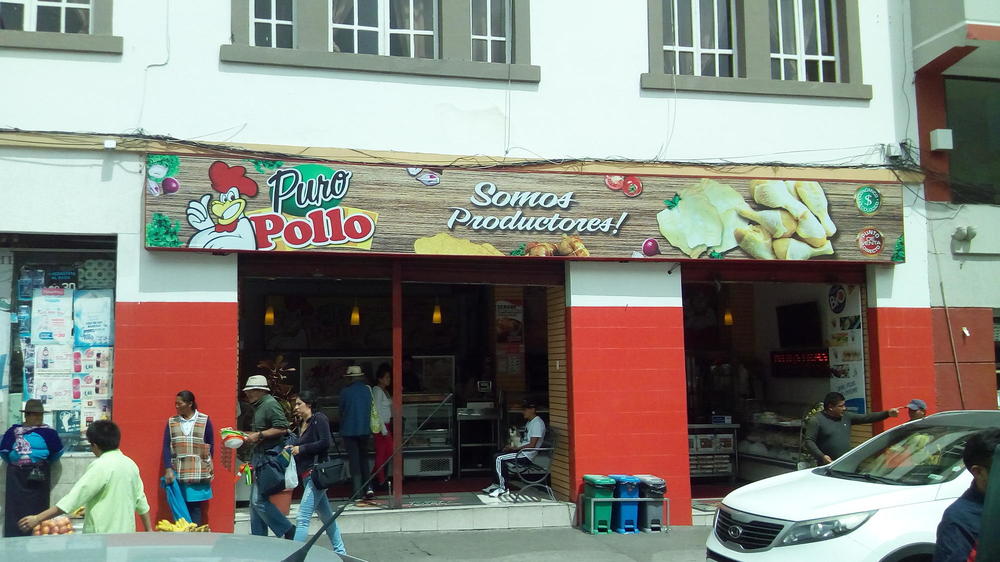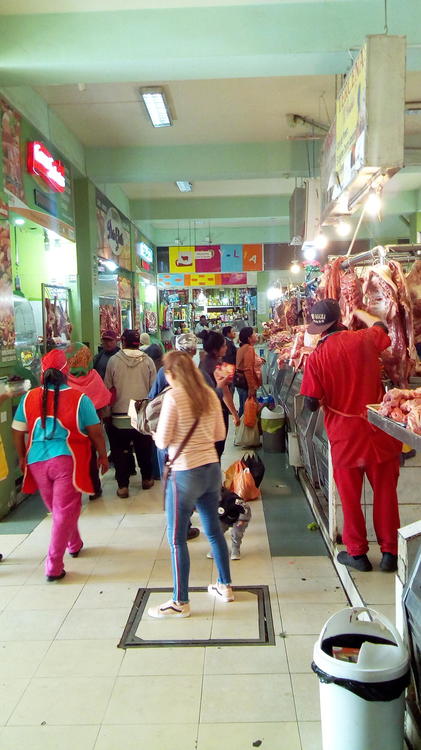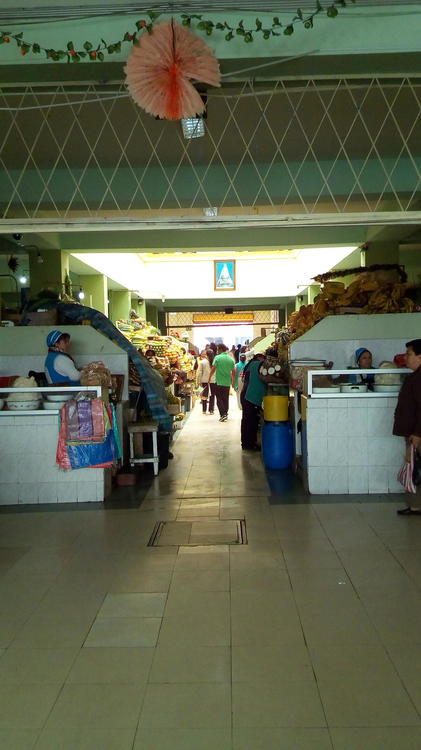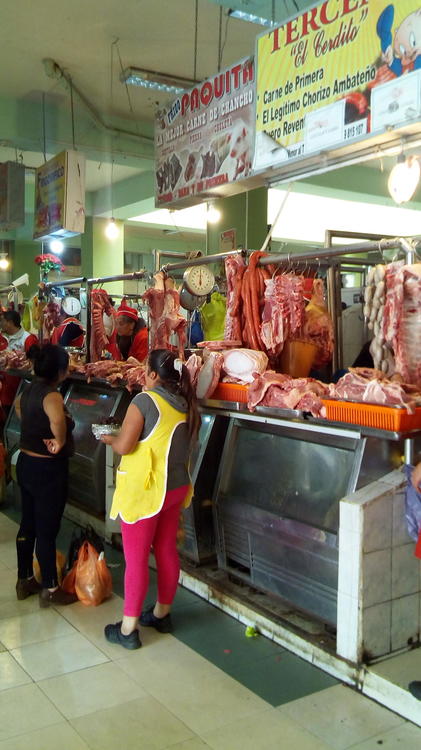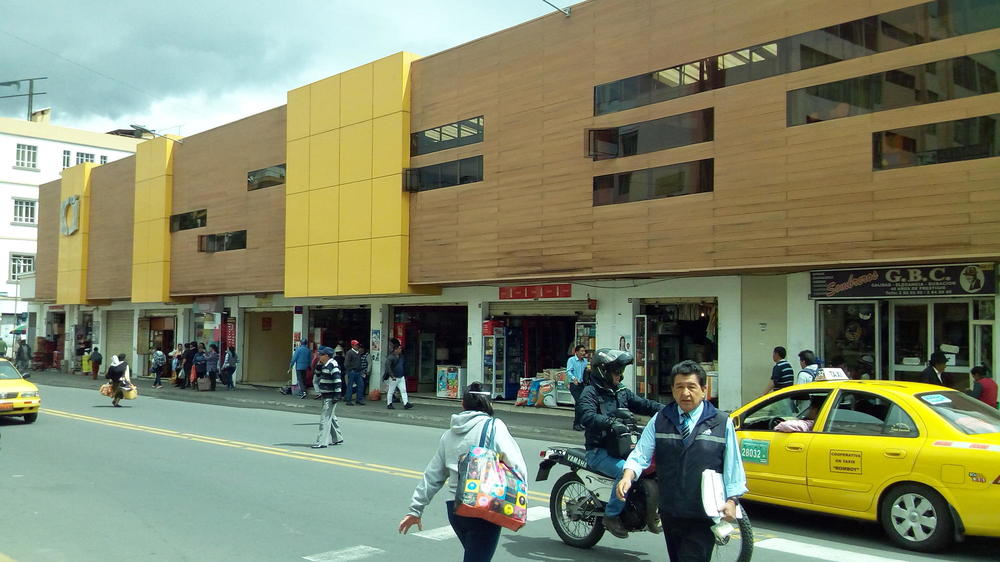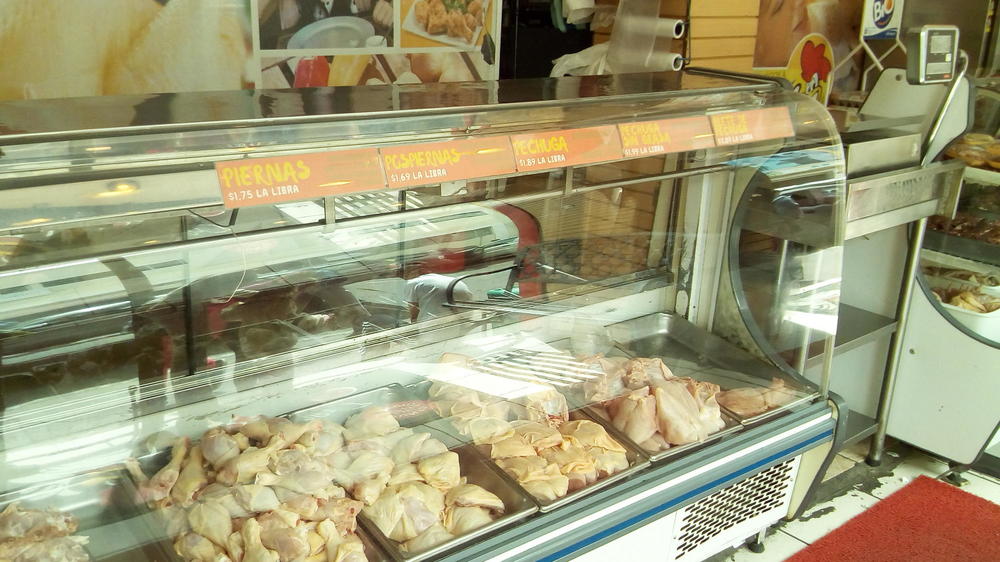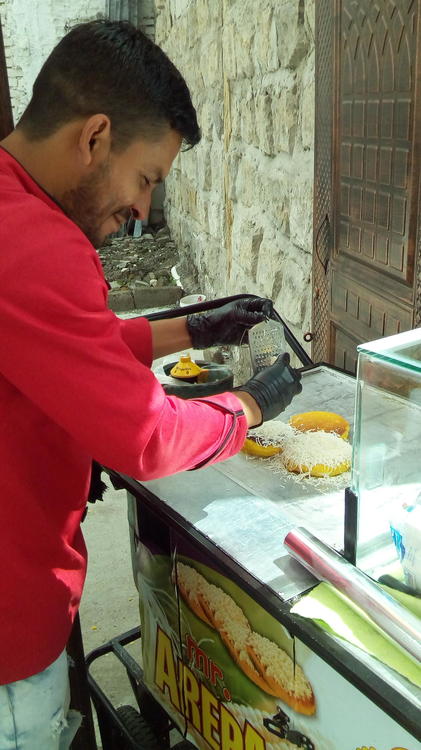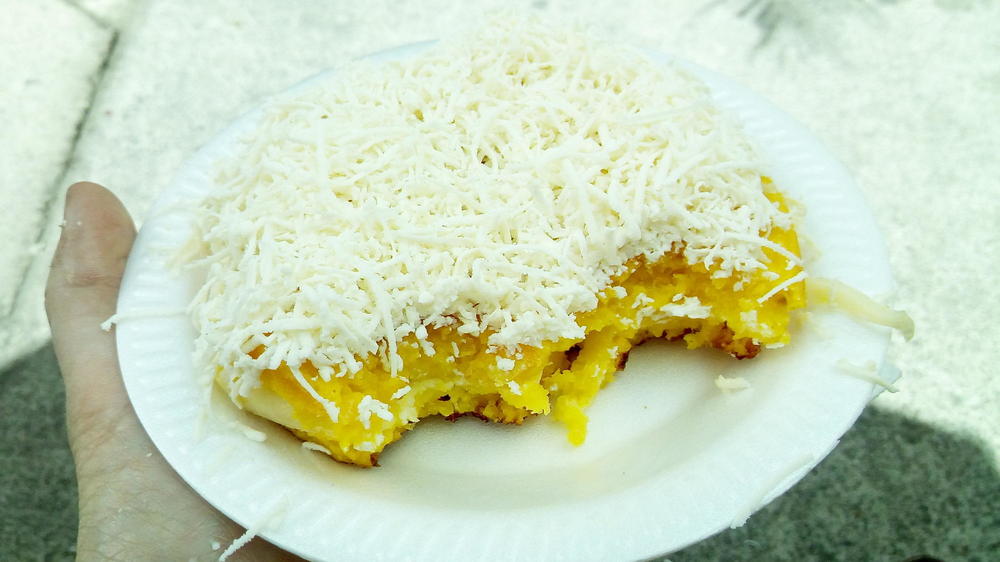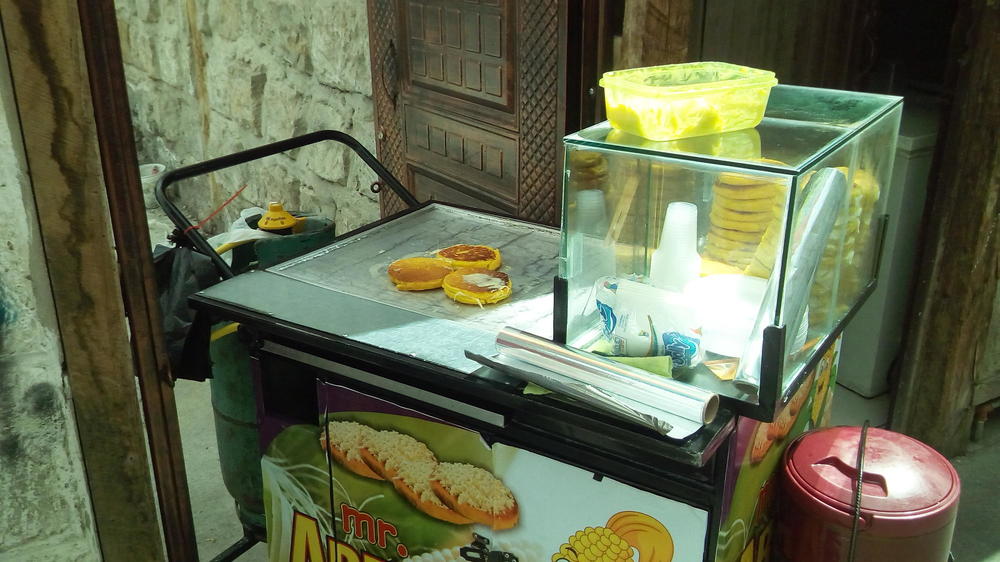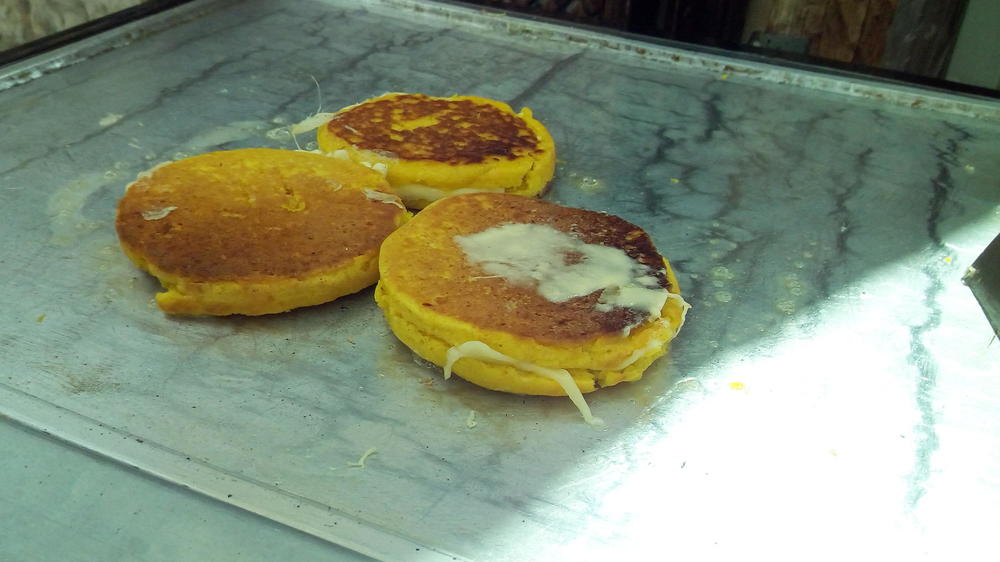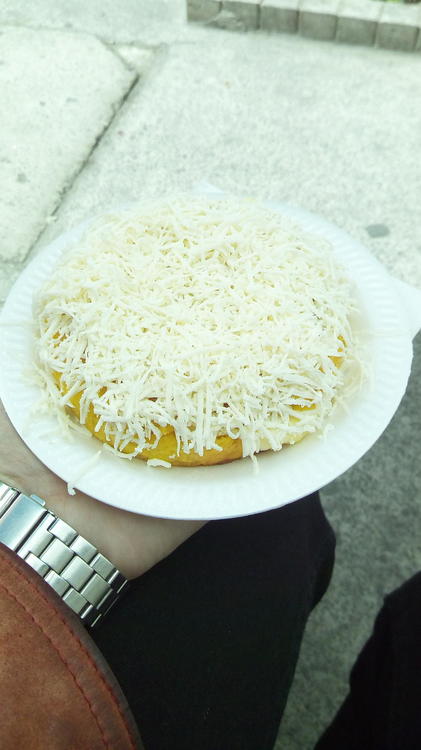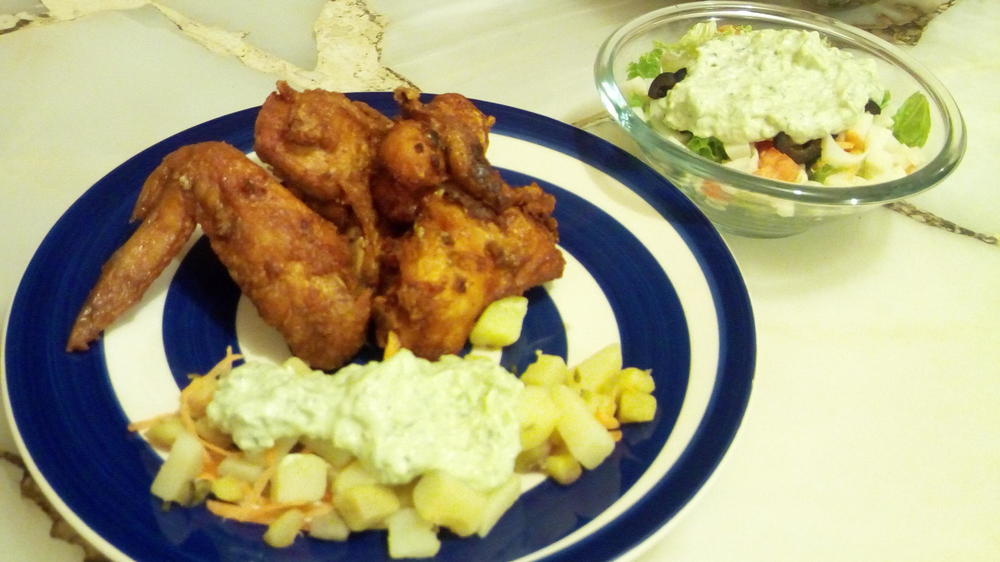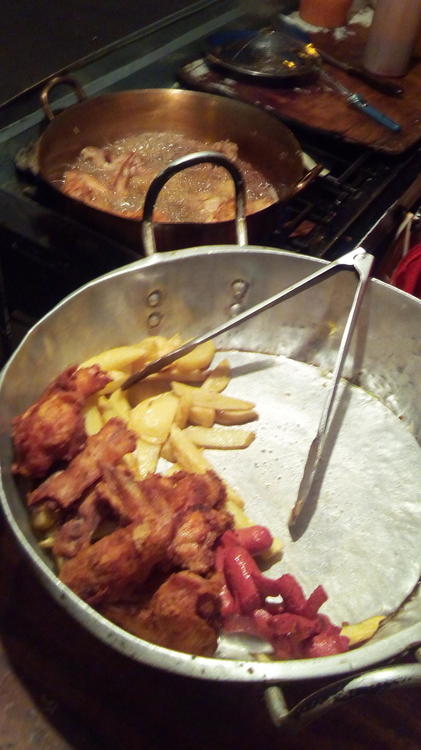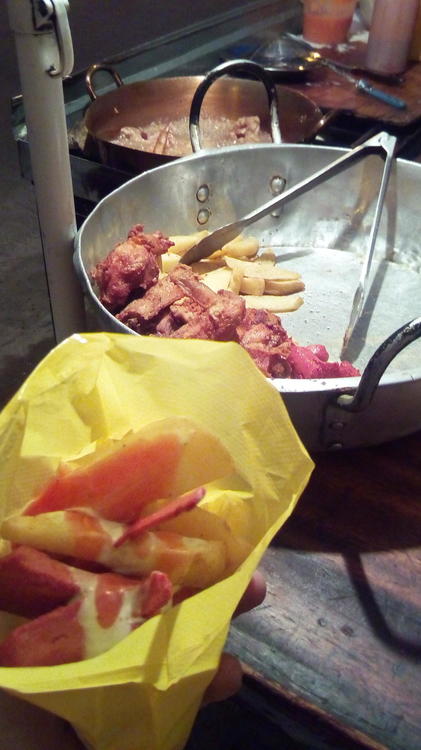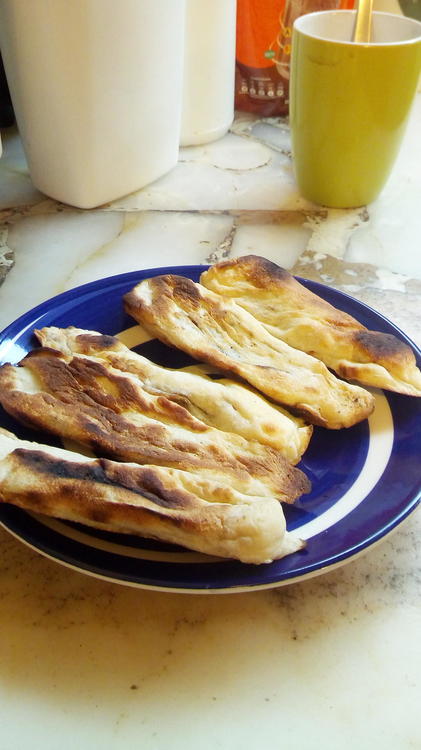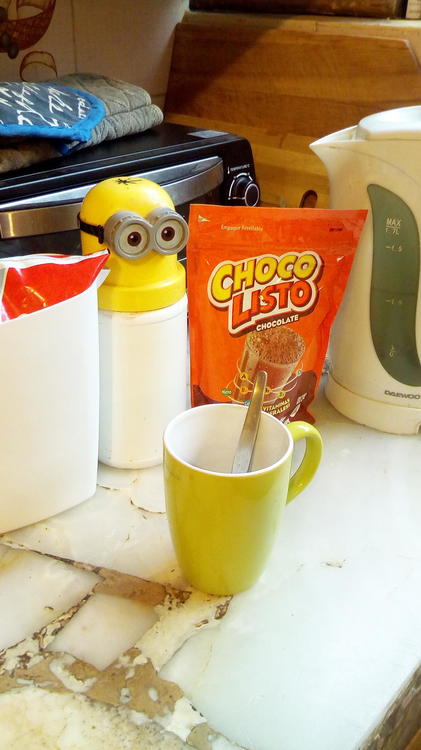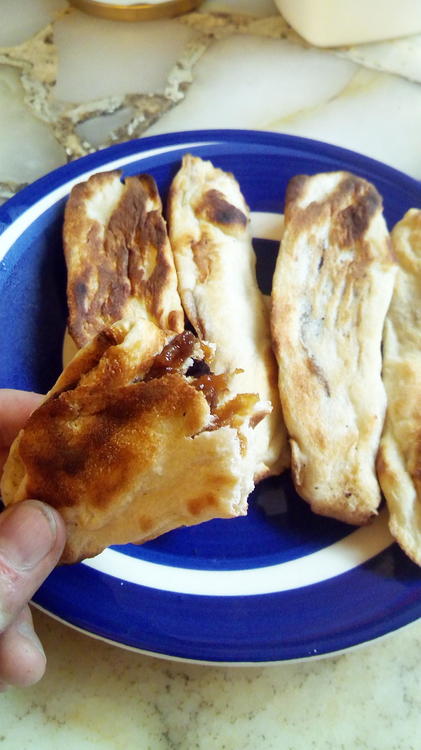-
Posts
2,383 -
Joined
-
Last visited
Content Type
Profiles
Forums
Store
Help Articles
Everything posted by Panaderia Canadiense
-
Maybe... I do weigh most other ingredients, but both powder and soda are measured by levelled graduated 5mL teaspoon. We checked yesterday; that's 6g for soda. It's another hoop to jump through - the rules they operate under are more logical when you think about big industries that use a lot of different restricted chemicals. This is the risk I run; it's one I run happily in order to do my duty under the Constitution of my country (part of which is to speak out when the government infringes human or environmental rights.). I won't get more political than that here on this forum, but I do get intensely so in courtrooms nationally. I'm aware of how dangerous this is, but as I said before, I don't really let it stop me. I just choose what I do, and how, to ensure that there's enough press involved to give me some international safety.
-
Aaaand... You know how back upthread I talked about the restrictions on baking soda and mentioned that occasionally I get subjected to spot inspections? I just had one! The SETED representative is a lovely woman, and the inspection process is fairly painless. This time around, they want me to calibrate my scale and to begin daily recording of exactly how much weight of soda I use in which products. As a result, the lunch post is coming a bit late. I had a couple of sandwiches left from the morning's deliveries, which I pressed because it was a chilly round to walk and I got rained on. There are a couple of things about lunch that I should mention. The first is just visible off to the left of this photo - it's a drinkable yogurt, peach flavour. Mom had guanábana (soursop) flavour, which is not my favourite. The second is that little pot of relish. It's made with Achogchas, which are a totally bizarre cucumber relative, tomate de árbol, and red peppers, and it approximates a North American sweet curry relish. A little later, I'm going to venture up the hill in search of Quimbolitos... Wish me luck!
-
And now, the reason that I've been lax with updates last night and today: Wendesdays are downtown delivery days. This meant making a fresh 16-piece pumpkin chocolate chip cake, and both quinua and rye breads for sandwiches. This is the delivery basket for the day, contents of which are dropped off at a number of local government offices, lawyers, and medical professionals.
-
I'm nearly impossible to offend - you can always ask about that kind of thing! Let's talk beer! (And also yesterday's dinner) I needed a little something, and since I'd used half the bottle in my rye bread, I decided to finish off a Biela Original. Unlike all of the other big-brewery bottles available in Ecuador, which are lagers, Biela Original is an American Blonde Ale. It's got a nice, delicate flavour with good balance and it's quite refreshing. My only complaint is the over-carbonization. Dinner, after all that rich and exotic empanada fare, was simple: roasted root veggies, steamed cauliflower, and roast chicken breast.
-
I've got a moment before dinner, so I'll dig into this... First off, expats. I'm assuming you use the term to mean people from first-world nations who maintain substantial ties with their home countries (this is the normal usage - primarily North American residents in other countries.). In this sense, the expat community in Ambato is still vanishingly small - maybe 10 people total. However, and this is key, I don't consider myself or my family to be expats. We're immigrants. The difference is that we left everything behind to make the switch, and maintain only cursory ties to Canada, and this is actually the situation of the bulk of other North Americans and Europeans in Ambato. Many immigrants here have married Ecuadorians and consider Ecuador to be their home (rather than the countries they came from.). Equally, Ambato is one of the biggest sanctuary cities when it comes to refugees, so our population tends to be quite international but the people have no intention or ability to return to their original countries. I've been pointing out throughout this current blog how that attitude, of receiving and becoming a new home to refugees from around the world, has shaped the city's food culture. It happens quickly, too. In the classic "gringolandia" meaning, Ambato doesn't have an expat community. People who choose this city, regardless of their starting country, become Ambateños after living here for even a short time; the North Americans who live here integrate into their barrios rather than forming their own pockets of culture. The expat-proper community in Tungurahua province is in Baños de Agua Santa, a hot-springs town about an hour downhill towards the jungle. The general sense of expats here is an almost stalwart refusal to adapt to the local culture, insisting on the superiority of their own and trying to change the areas around them by force. This has varying degrees of success and leads to a lot of resentment by the locals and the immigrant community, the first for the disregard of the culture that's already here, and the second because they're often tarred with the same brush used for expats. We chose Ecuador after about a decade of careful research, took a holiday to see Colombia, Ecuador, Perú, Bolivia, and Argentina, and fell in love with Ecuador almost as soon as we touched down. After that, it was mostly the matter of liquidating Canada and making the move. I don't regret a single second of it; I've been here now going on 13 years, and became a naturalized Ecuadorian citizen in 2012 (another reason I'd call myself an immigrant.) If you choose to expatriate or to immigrate, there's really only one thing to hold in mind: you're not in Kansas anymore. If you're adaptable and able to roll with the sometimes absurd circumstances that moving to a completely new culture and country entails, you'll probably enjoy yourself immensely; if you're unable to change, you'll have a horrible experience. Personally, I love this country, for all its ups and downs. During all of the previous blogs I've written, Ecuador was under what's referred to as a "soft dictatorship" which got increasingly more severe towards the end of Correa's unprecedented third term in office. This is, incidentally, why I disappeared not just from the eGullet but from most social media, after 2016 - the government cracked down hard on freedom of expression, especially through social networks, and it was safer for me to go quiet - I respect the rules here about politics, so I never really talked about how politically active I am here (which is very - I'm kind of a thorn in the side of whatever administration is in power. This isn't a particularly safe pastime, but it's a patriotic one.) Under the new administration, which has been in power a little over a year, things have opened up considerably, and it was safe to reestablish my digital presence - and I'm also poking the administration harder than ever.
-
Now... Let's talk empanadas and bakery culture! Today's fare is thanks to four bakeries within walking distance of my house. Ambato is probably unique in the world for there being a small bakery within about 10 blocks of anywhere in the city (and that's being generous with the distance), and for most of the corner stores stocking fresh bread daily. Ambateños proudly say that part of what makes us Ambateño is that there's fresh bread at every meal. Bakeries here run the gamut: I'm the only catering bakery, but we've got the home branches of three large chains here, a number of family-owned industrial bakeries, and a healthy population of artisans. Four types of oven are used: electric, LPG, diesel, and ancient wood-fired ovens. And with all this variety, there are plenty of empanadas on offer every day. First up: DeliFruit de Los Sauces, which is furthest uphill of me (4 blocks). This isn't a bakery in and of itself, but rather a full-service mini market that stocks the bread of Ambato's largest industrial bakery, Cavisa (incidentally, if you go waaaaaay back to my very first foodblog here, I lived 4 blocks from Cavisa!) as well as Pan de Pinllo. This is important for two reasons: one, because there isn't another bakery serving the uphill communities for about 8 blocks, and two for the Pan de Pinllo. Pinllo is a township barrio in Ambato that's famous for a couple of things, most notably for having wood-oven bakeries that have been in continuous production for nearly 200 years. Pan de Pinllo is always wood-fired, and it's sought after for the unique flavour this gives to the bread. I'm here to buy Empanadas de Pinllo, which are a white bread enriched with lard, stuffed with cheese, and lightly sugared. They're $0.25 each. Next up, Pan de Casa, which is a local family bakery with two locations. They produce probably 5,000 buns a day in various shapes, sizes, and types, and I'm here for their really fabulous Empanadas Integrales (whole wheat empanadas) which are also cheese-filled, but without the sugar. Pan de Case is also about 4 blocks from my house, but less uphill than DeliFruit. . Third up, Cinco Esquinas, a large-scale artisan bakery inside a mini market of the same name, just one block from Pan de Casa, and 4 blocks from my house by a different walking route. I'm here for their sweet empanadas, which are the best in the area. You'll notice that these last two bakeries have been open-bin, serve-yourself affairs with actual bread baskets for your purchases. This is common in Ambato bakeries, which trust you not to fondle the buns. Finally, there's Delicious, which is another large-scale artisan bakery. I'm here hoping against hope that they've still got Empanadas Chileñas (Chilean-style empanadas), because theirs are among the best in the city. Delicious is 6 blocks from my house, which makes it "far away" by Ambato standards. I was in luck, and they also had Humitas - bonus! Now to examine the haul! I spend $4.20 all told, and what I got for it is this: five big salt empanadas, three dessert empanadas, and a humita. This is actually more than two of us can eat for lunch; the Pinllos and the Berliner will have to wait until we've got room again. . Clockwise from top left: Empanadas de Pinllo, Empanadas Integrales, Empanada Chileña Clockwise from top: Berliner, Enrollado de Chocolate, Empanada de Piña To accompany the feast, we're having big mugs of instant bouillon. So... Let's start with the Empanada Chileña! This is a big pastry, enough to feed one person for lunch all on its own, and it's stuffed with ground beef cooked up with tiny shreds of onion, raisins, and finely chopped walnuts. This doesn't sound like a normal combination for flavours, but it's both savoury and sweet in perfect measure, and leaves me initially wishing I'd had more than just the half of it. Chileñas get their name from the Chilean refugees who brought this style of empanada with them in the 1970s and 1980s; they're very similar to Cornish Pasties in size, dough, and texture. Next up, the Humita! This is a steamed, slightly salty cornbread, in this case stuffed with a chunk of fresh cheese, and a very popular accompaniment for coffee or light lunch. They're always sold in the corn-husk wrappers that they're steamed in, which give them both form and a delicate flavour of cornsilk. Humitas are most common in Loja and Azuay provinces (south Ecuador), where the best corn to make them is grown, but they're available nationally. Sweet Humitas are also available, which are stuffed with either raisins or prunes, and fully savoury Humitas might feature onions, pulled pork, or chicken. After the Humita, it was time for the Integral. This is a much more humble pastry, simply filled with fresh cheese curd; what sets it apart is the soft whole wheat bread that surrounds that cheese. Most bakeries here bungle whole wheat, turning out dry and crumbly results, but this location of Pan de Casa gets it right. At this point, we knew we didn't have room to have both the Pinllos and the desserts, so we opted for the desserts. First up is the Enrollado de Chocolate, which is Ambato's answer to a Parisian Pain au Chocolat. The difference here is that the Enrollado doesn't use a puff dough, opting instead for something closer to a light brioche. Next up is the Empanada de Piña, which, as its name suggests, is a leaf pastry stuffed with pineapple. It's an example of the Ecuadorian tradition of Viennoiserie, and another food that came to the country with refugees, this time Austrian and German Jews in the 1930s and 1940s. Ecuador has adapted Viennoiserie to its own palate, producing strudel-like empanadas, fanciful puff pastry confections filled with chocolate or dulce de leche, and the king of dessert pastries, the Mil Hojas. For this last, I'll have to hit up Ambato's French bakery later in the week. I'm particularly fond of Cinco Esquinas' take on the pineapple empanada, because their filling isn't over-sweetened, letting some of the natural acidity of the fruit shine. I didn't have room for the Berliner, so that one is going to have to wait for later...
-
Oh, a blender is definitely involved! It's more that nobody owns a centrifugal juicer the way most North Americans do. I'll make more juice for dinner tonight and give you all a step-by-step at that point, but basically you toss chopped fruit of your choice into the blender with a bit of water, vrrrrp! and strain. Or don't strain, if you were juicing something not-too-seedy that you enjoy the pulp of.
-
Fascinating as this is, home-growth of even one marijuana plant is still completely illegal in Ecuador, and carries a hefty jail term. I have an acquaintance who was caught with 30 hectares of plants; he'll be in jail until his youngest son graduates university. Growing here is heavily regulated within the natural remedy industry, by the same secretariat that controls baking soda. So, instead let's take a look at last night's dinner and this morning's breakfast! Dinner was a Canadian staple, meatloaf and steamed veggies, but with the Ecuadorian touch of a pile of buttered rice. This is the long-grain gold rice that I bought on Sunday. Accompanying it is freshly-blendered melon and strawberry juice. If anyone's interested in how juices are made in Ecuadorian home kitchens, I'm happy to go on and on about it, especially since everybody makes juice but hardly anyone owns a juicer... And since it's a miserable cold rainy winter day, breakfast is what nearly every Canadian turns to, to give them a nice start: oatmeal! In my case, with fresh strawberries and a generous heap of panela on top.
-
The country has grown in leaps and bounds even in the 13 years I've lived here; this is due in part to strong social programs with a focus on the inclusion of traditionally disadvantaged groups. It's no always fast change, but it's steady. Ecuador is one of the few countries that's actually benefiting, at least in the short term. The Humboldt current comes earlier in the year now, and stays longer, bringing larger popuations and viable breeding popuations of commercially popular species into our waters. This, coupled with an increase in shrimp farming, has actually pushed Ecuador into one of the top spots for world seafood production. We'll likely stay there, too - fisheries age very closely monitored to ensure sustainable harvest, and the bulk of our fleet are considered artisans - there are almost no trawlers here.
-
Okay. To approach this question, you need a bit of background on Ecuador and on cocaine production. Ecuador is geographically right in the heart of coca country - we're sandwiched between Perú and Colombia, which are world leaders, and the soil here is leaps and bounds more fertile - but despite this, it's not a major coca producer. The government actively de-incentivizes coca plantation by making other crops, like broccoli, far more financially attractive to subsistence farmers. Hand in hand with the non-drug crops programs, there's the restriction of access and possession of the chemical precursors that are used in the cocaine refining process; this includes strong bases like lye (used in the initial steps of processing), and weaker ones like washing and baking sodas (used in the final steps of processing), some acids (including full-strength citric acid, which is also used by the cheese industry), as well as a number of high-potency solvents like toluene and acetone. The restricted substances list has about 50 chemical precursors on it, some of which are hazardous substances in their own right, and all of which are used in cocaine refinery labs. This has had a few interesting results for the public, outside of reducing the active cartel presence in Ecuador to a small number of smugglers and traffickers. (This is why Ecuador regularly rates as safer and better to live in than Colombia, even though Colombia is, on paper, a "better" country in terms of economy.) As everybody knows, there are about 50,000 non-cocaine-production uses for sodium bicarbonate, ranging from cleaning products to acid-stomach remedies to leavening and redox agents in the kitchen. In Ecuador, if you want cleaning-grade baking soda, which is adulterated with boric acid, a non-staining blue dye, and silica grit among other things (which make it a great industrial cleaner but hazardous for human consumption) this can be bought in large quantities at most markets. However, if you want more than 5g of food-grade, which is 99.999% purity bicarbonate, you need to jump through some hoops to convince the government that you're not itching to become a cartel chemist. That mentioned 5g? You can buy it at the pharmacy, as an over-the-counter medication, and they won't let you buy more than one at a time. The Ministry of the Interior (AKA the police), through a body called SETED (Secretaría Técnica para la Eliminación de Drogas, or the Technical Secretariat for the Elimination of Drugs), along with regulating opioids and other narcotic prescription drugs and running the medical marijuana growers program, issues permits for industries that use baking soda and other precursors in legal applications; you have to tell them what you're using baking soda for, why it can't be replaced by something that isn't baking soda, provide the chemical reactions that are your basis for use, percentage-weighted formulas for the recipes you use, and agree to random spot inspections and monthly reporting of consumption. Larger industries that use listed precursors also have to have legal representatives and chemists to support their use of these chemicals, and special storage and handling procedures. The cost of the permit is based on the size of your industry and how much of the substance you're using - so for me, because I'm called a Class 1 Artisan Bakery with a consumption of around 3kg a year of bicarbonate of soda, it's about $20 a year. For a Class 5 Dairy, which uses five or six listed substances in the range of thousands of kilos, it can be up to $5,000. Failure to report substances under your care, or being caught with over 5g/5mL of any of the precursors that you're not licensed for, carries both a hefty fine and jail time. There's actually an active lobby within SETED itself for deregulating baking soda, based on the argument that it's far more useful in legal processes than it is to the cocaine industry. They've been arguing with the National Assembly for about a decade now, with no results.
-
Cheddar: not yet. But the Canadian Ambassador assures me that there's a trade deal under negotiation that would open the market to it, and drop the price of other quintessentially Canadian foodstuffs. In the meantime, there are a couple of local styles of cheese that come close to the pungent aroma and sharp flavour of aged cheddars, amongst them Angochagua and Don Zuleta; very old Andino is also in the running, although that style is closer in character to Asiago. For the frybread, we don't have anything quite like it; generally, corn arepas of various sizes replace that style of bread as the "plate" for street food. Certain types of plantain tortilla might come close, as does the colourfully named Arepa de Cemento. Incidentally, the closest thing in texture is an Arepa de Guaranda, although that's a) filled and b) not as fluffy.
-
After the Maxi, it was time to go back downtown - the power company had an issue last month that means although I paid my bill, their system thinks I didn't. That's OK, because there are a couple of other things I want. First is 2kg of baking soda, which is a restricted substance in Ecuador. I had to apply for a special government licence to possess food-grade bicarbonate of soda, and it comes with some obligations, including careful monthly monitoring and reporting of the mass I use, and what I use it for. If my company were larger, I'd have legal responsibility (and we're talking capital crimes) for my employees' use of baking soda as well. But hey... I'm actually down here for something that's far less of a hassle than baking soda. I'm walking up Calle 12 de Octubre towards an Ambato landmark hueca, La Chabelita. This street is a bit of a trip on the best of days, but Monday is open market day in Ambato, so it's more crowded than usual with a huge variety of everything for sale. Morochos de la Chableita is probably about six blocks from where I took that video, across from the main offices of the power company. It only opens in the afternoons, and this is the third location occupied by the family. This hueca specializes in a few different types of fried dough, and in the drink called Morocho. Earlier today I was lamenting how difficult it is to find empanadas de morocho; I guarantee, it's as easy to find the drink as it is difficult to find the empanadas. That big pot she's ladling out of in the mid ground of the centre picture is morocho drink; think of it as being slightly more fluid than rice pudding, but with a similar texture and flavour. It's usually got whole allspices floating in it, and it's somewhat chewy from the larger bits of flint corn. Morocho is a filling beverage related to the Mexican horchatas. I'm at Chabelas for a glass of this, and for two of her specialties: an Empanada de Viento (literally, a wind empanada) and a Platano Frito. She's also cooking Buñuelos Emborrachados (drunken dumplings) Although I didn't eat them this time, it's worth mentioning the Buñuelos Emborrachados if only for the strangeness of their name. Buñuelos are larger fried dough-balls, similar to donuts, which are heaped into a bowl and drowned in a heavy panela and spice syrup with a hint of cane liquor. First up, the Empanada de Viento. This is a wheat dough filled with a bit of crumbly fresh cheese similar to feta, fried so that it puffs up. Chabelita's empanadas de viento are far more substantial than most - she is generous with the cheese, and that means that the big air pocket that gives the treat its name is greatly reduced in her pastries. I'm willing to make that sacrifice, through! Second course is the Plátano Frito, which translates directly as "fried plantain." That's a bit misleading, because what this thing really is, is a beer-battered banana! It's one of Mom's favourite Ambato fast foods; the banana inside, a type called Silk Plantain, sort of becomes a creamy pudding version of itself when fried. Contrasted with the crispy, slightly salty batter, it's a delicious and filling treat.
-
La Esquina de Morocho is on the way to the mall (yes, "the" mall - this is a city of 500,000 and we only have one) to visit the MegaMaxi, which is like a North American supermarket. This is pretty much like any other big supermarket in the world, except with highly regional snack and convenience foods. There's been a lot more European variety in here since the trade treaties with the EU were signed; for me, it means I've got more Spanish wine to choose from, and that the quality of even a $5 bottle has skyrocketed. The first chunk of the fruits and vegetables case here is devoted to convenience products - DoyPacks of fruit pulp make fruit juices and fruit-based desserts a breeze, and down at the bottom you'll notice whole coconuts that are chilled and ready to drink. I've always wondered who buys these - they're twice as expensive as a coconut out on the street. There are also convenience foods here - what's pictured are portable ceviche packages in two types. A Cevichocho is made with lupines, and Ceviche de Palmito is with fresh palm hearts; both packs come with a generous amount of the spicy tomato, lime, and onion broth, Chulpi (toasted long-grain yellow corn) and Chifles (green plantain chips), which would accompany a ceviche if one were eating it at a street cart. The cheese aisle has also expanded greatly since the EU treaties; where about 1/3 of the length used to be occupied with mozzarella and queso fresco (and mozzarella still has a stranglehold!), there's now a generous section devoted to more aged cheeses, both domestic and imported. Beer has also seen something of a renaissance here in the past two or three years. Three years ago, the government had to break up the national brewery into two companies, citing antitrust laws; half of the production remained in the hands of the original Cervecería Nacional, and the other half was sold to AmBev (the parent company of big US brands like Budweiser). CN kept Pilsener and Biela, and AmBev got Club, and then innovation started. Part of the terms of the division were that the CN no longer had a monopoly on the import of hops and malts, and this caused a commercial microbrewery explosion. Resultantly, the big two have had to introduce beers outside of their traditional light Pilsen lager staples to stay competitive. The store devotes an entire aisle-end to microbrews; there are twelve companies represented here, brewing probably two dozen different styles. Stouts, reds, and lagered porters have recently become very popular, and even AmBev is now producing a red and a black porter under their Club label - neither of which hold a candle to the reds and porters made by the smaller breweries. Ironically, Ambato's leading brewery, Ambatown, is not currently represented at the Maxi; while they produce just enough volume to make it into the national chains, they refuse to go national on the grounds that it would deprive Ambato and Baños of their brews. That's okay, though; the brewery is only three blocks from my house, so I never go short! Even in the "traditional" beers cooler, the light lagers (Heinekin, Bud, Corona, Club Green, Pil, and Biela) share shelf space with microbrew ales. Sabai and Paramo are two of the most popular ale brewers in the country. Coffee is also gaining market share locally - previously, the very best beans were exported but Ecuador now keeps some of it at home. Juan Valdez and Sello Rojo are Colombian imports, and are kept in stock for the refugee community; everything else is domestic. Vélez has become very popular in France; ES Café is beginning to win international awards, as are Gardella and Galletti. For those interested in domestic specialty cooking and dressing oil production, here are the heavy hitters. Mira is an internationally award winning producer of avocado oil; they're located in Tungurahua, in the neighbouring county of Patate. Other companies are now producing locally-grown and cold-pressed chia, flax, sesame, sunflower and peanut oils, and deserving of a special mention is the Sacha Inchi oil on the top shelf. This is from the seeds of the Ecuadorian Amazon-native euphorb vine Plukenetia volubilis (mountain peanut) and is one of the leading oils in terms of fatty acid content; it's got a delicate nutty flavour and is delicious on salads. Sacha Inchi is produced by small women's cooperatives, and has gained incredible market share since its introduction about two years ago. Together, these specialty oils occupy more real estate inside the Maxi than canola, corn, and soy combined. Another interesting development here is that about 8 months ago, the federal government passed a bill outlawing plastic drinking straws. They're not sold anywhere anymore, and have been replaced with waxed paper straws, which biodegrade completely within about 12 months of hitting the dump. Finally, a look at how obsessed Ecuador is with making arepas and tortillas at home. There are no fewer than three coolers full of this stuff in the deli, ranging from big Colombian style white corn arepas, which are meant to be used like edible plates, to smaller stuffed ones, wheat and corn wrapper tortillas meant for the production of empanadas (La Chilenita is one of the most popular brands for these - when fried, they puff up like pastry), and also big flour tortillas for Mexican cooking. There are also, hidden at the back of the first cooler, freshly prepared convenience empanadas with various fillings and shapes in verde and wheat doughs, ready to cook. Humitas and Quimbolitos are also represented here - I'll talk more about them later in the blog, when I go in search of absolutely fresh ones (nobody who's not desperate buys supermarket humitas.)
-
It's about $4-6/lb here, depending on the cut, and ground lamb is $3.50/lb. It's more expensive than chicken, comparable to pork in terms of price, and a bit cheaper than beef (a lot cheaper than the beef I buy, but I've got a bespoke butcher.). In Ambato there's more tradition for eating lamb than there is in other highland cities - I think it has to do with living so close to areas that raise merino sheep. Even so, a lot of people in my generation don't know how to cook it and seem to be disinclined to learn, so the specialty butchers who deal in lamb and goat are declining.
-
Then it was time for empanadas. La Esquina de Morocho, in the South-Central barrio Presidencial, it's justifiably famous for their Ecuadorian typical empanadas, and I'm here for one specific style that's been disappearing from the streets: the Empanada de Morocho. This is a small, crunchy shallow-fried empanada filled with either shredded pork or chicken; what sets it apart is the wrapper, which is made of morocho (medium grind Flint corn) dough. The dough takes about four days to prepare, and had multiple soaking and pounding stages before it's ready to form into wrappers. The smaller, whiter empanadas are Morochos; these are chicken ones. The larger gold empanada is a Verde de Pollo, which is green plantain dough, stuffed with lots of meat and vegetables, then fried to crisp the outside of the crust while leaving the inside soft. Both are delicious, with Morochos being more of a snack, and a Verde being more like a light lunch. And if course, a mochaccino to wash it all down, since it's chilly out.
-
After this, it was time to buy chicken and the few things that we missed at the Mayorista yesterday. Chicken is probably the staple protein of this city. Pork specialty dishes notwithstanding, it's what's most common on lunch menus and in kitchens throughout the Sierra. We've bought ours at Puro Pollo for going on 10 years now; this is a big farm that specializes in organic field hens. It's really good and quite inexpensive. Across the street is the Mercado Central, one of the city's oldest covered markets. The current building dates from about 1950, and many of the vendors have had their stalls inside since it opened; the average age of a stallholder here is close to 70. The Central also is where Gloria, my supplier of lamb and kid goat, has her shop. Gloria sells between 5 and 7 lambs a day, in various cuts. The Central has recently been given a facelift, although the internal structure is largely unchanged. There's street food outside as well, like this vendor who has chunks of fritada and sweet oca (a traditional Andean tuber) The Mercado Central is right across the street from the Mercado de Flores, where the bulk of the city's fresh cut flowers are sold.
-
For this blog, I'm actually deliberately skipping breakfast in favour of street food. So breakfast today happened at a brunchy hour, and consisted of an Area Colombiana, which are also known locally as Arepa de Choclo. These are fairly large, sweet yellow corn pancakes stuffed with mozzarella, then topped with freshly grated hard ricotta. They're liberally slathered with butter and heated on a flat griddle that's built into the cart. Juan is a Colombian refugee; he's been in Ecuador about a year. He says that the parent company, Mr. Arepa, was founded by another Colombian refugee as a restaurant in the 1970s, but the owner has recently decided to go mobile. She employs almost entirely other refugees, serving the street food of her youth in Calí. This kind of company is part of Ecuador's informal subsistence economy. The Arepas themselves are fluffy and light, and although they're a bit messy to eat they're an excellent breakfast.
-
And dinner last night is what we often have on Sunday nights if we're feeling uninspired. Last blog, I introduced you all to Belén, my neighbor who fries chicken on the weekend. She didn't want to be photographed this time, but her food is as yummy as ever! I still maintain that the absolute best fried chicken in the city, probably the country, is made here in her brass paila. To it, we added a green salad and chilled potatoes, both under guacamole.
-
I didn't know that's how it worked! I'm going back up to edit those posts now - thank you so much!!! Winter here is a bit nebulous and depends on your specific location within the country - this year, because of the fun of climate change, cold wind and heavy rains in my area started three months early, in March, and nobody cares to venture a guess as to how long they'll last. It's wreaking havoc on the harvests in the lowlands, which have seen unprecedented flooding this year; landslides on the main roads linking the Coast and Amazon to the Sierra have also disrupted transport in fairly serious ways. Entire banana, peanut, and cacao plantations were lost to flooding in Los Ríos and Manabí, and we've been seeing higher than usual produce costs for coastal crops.




